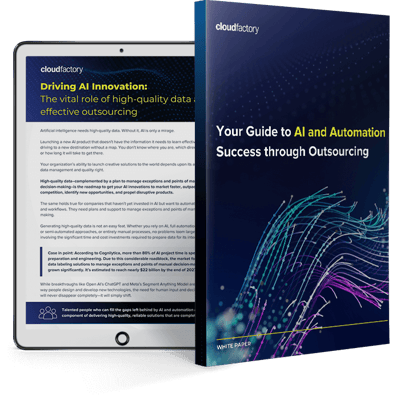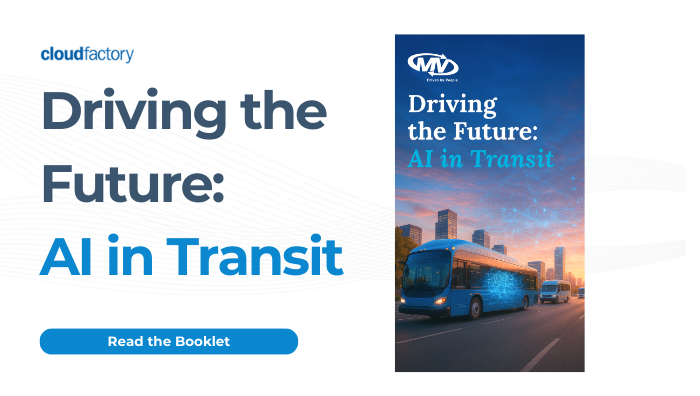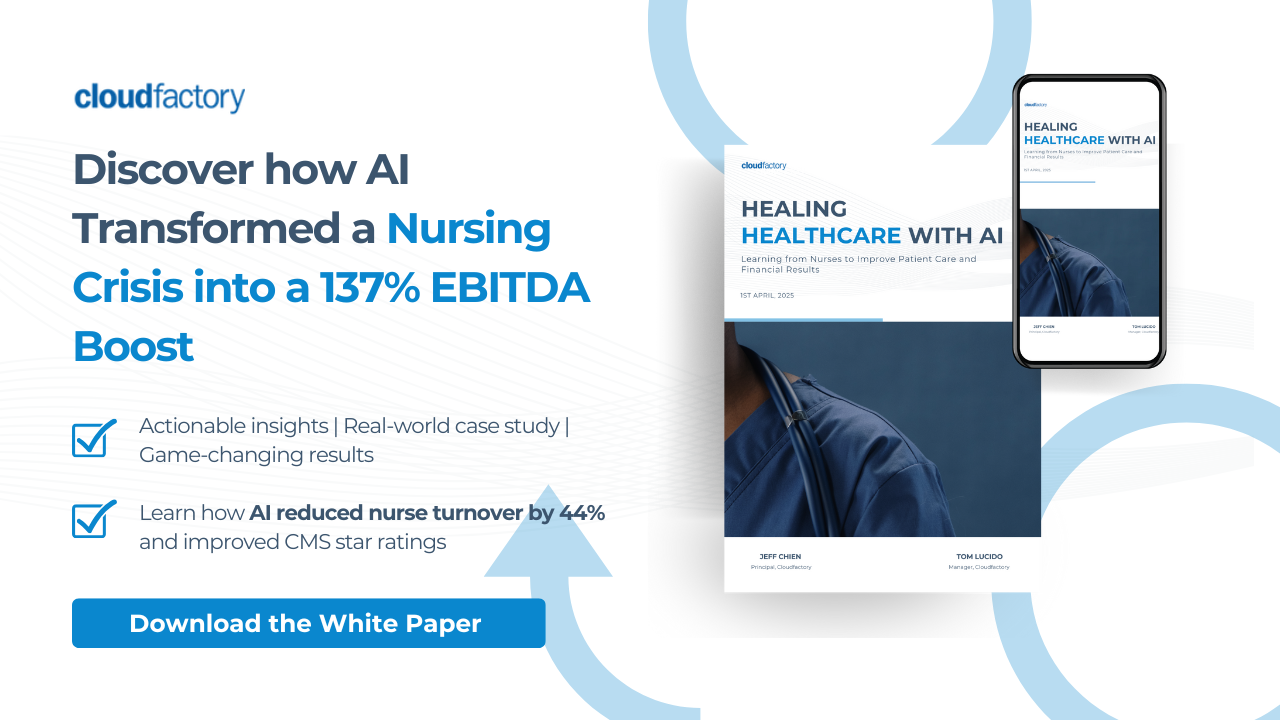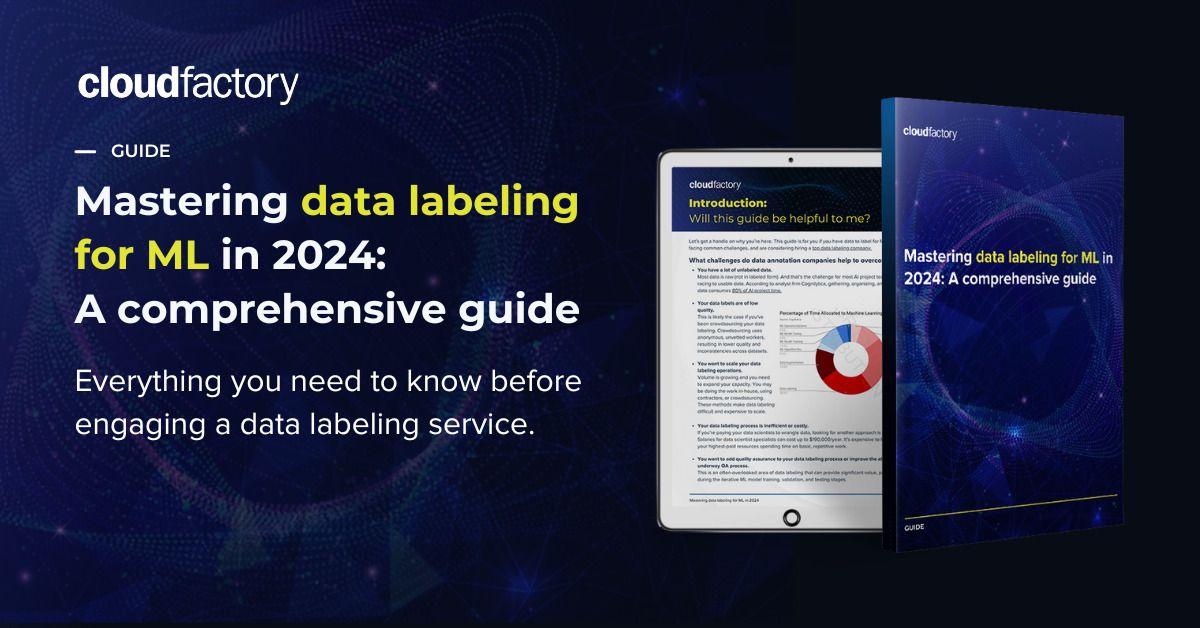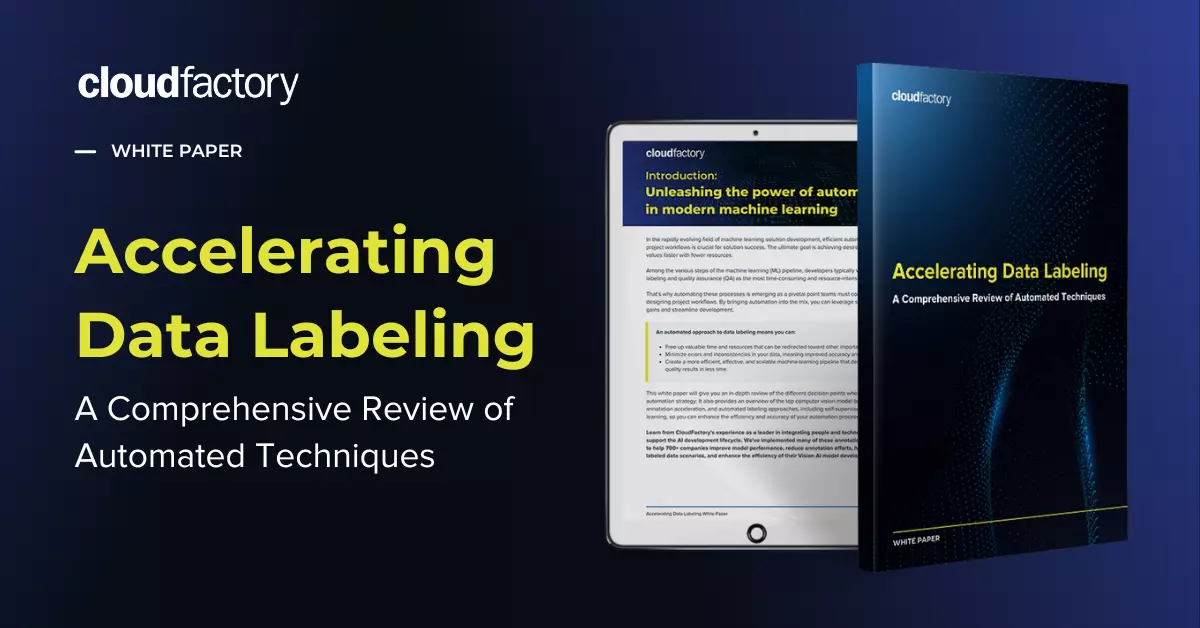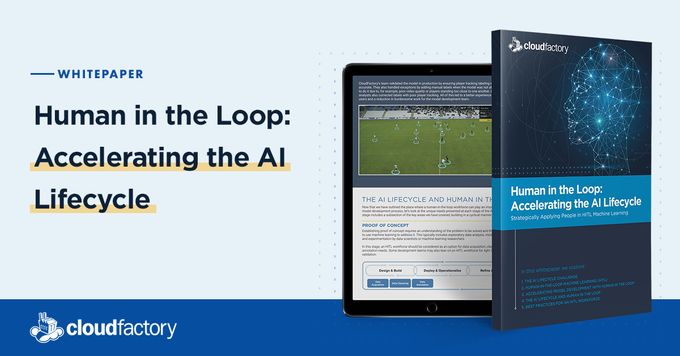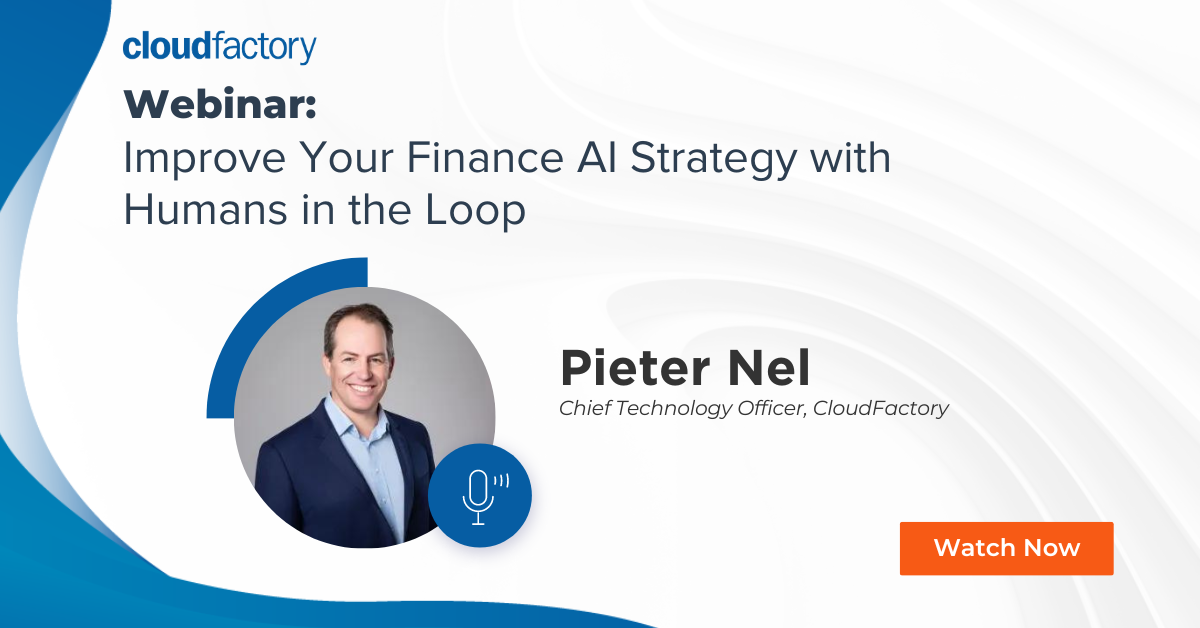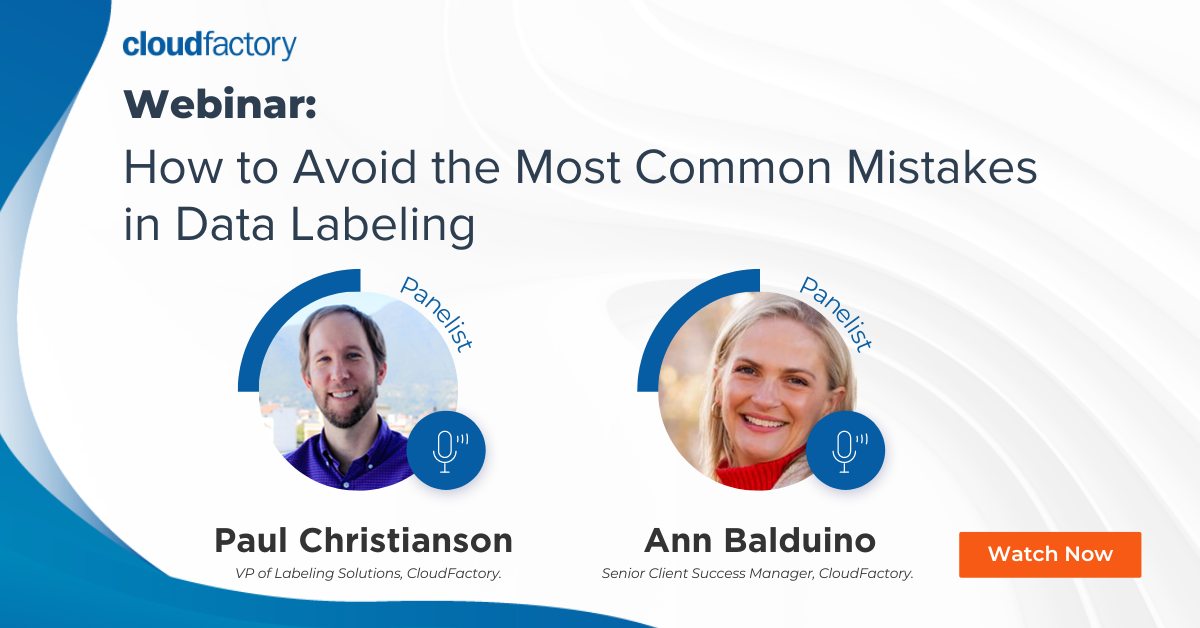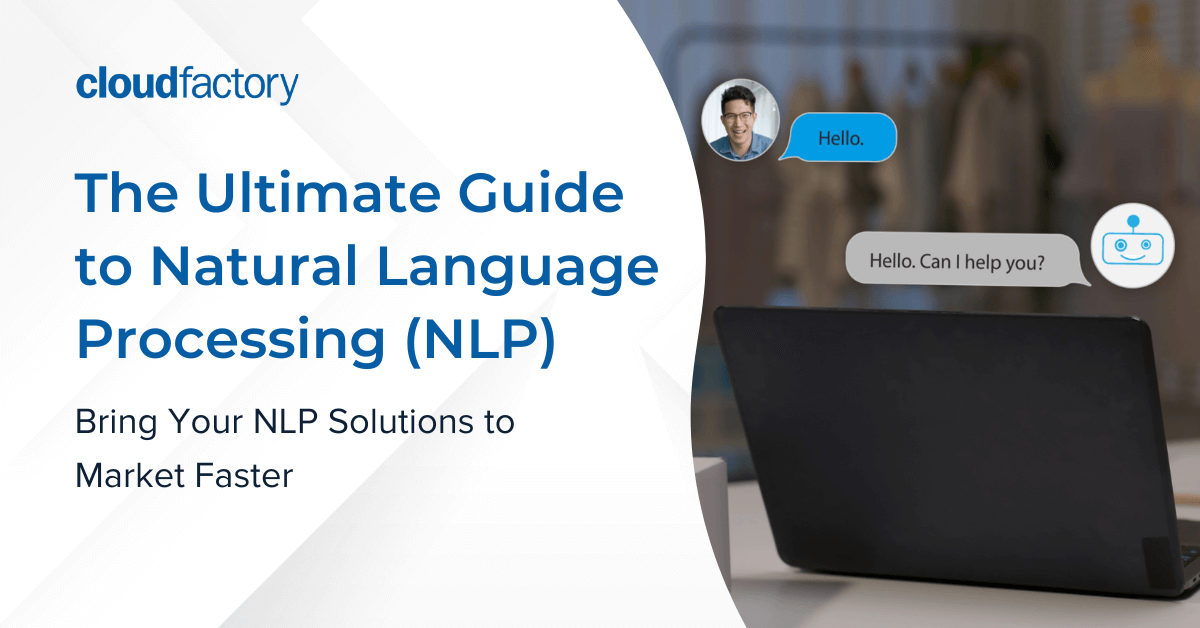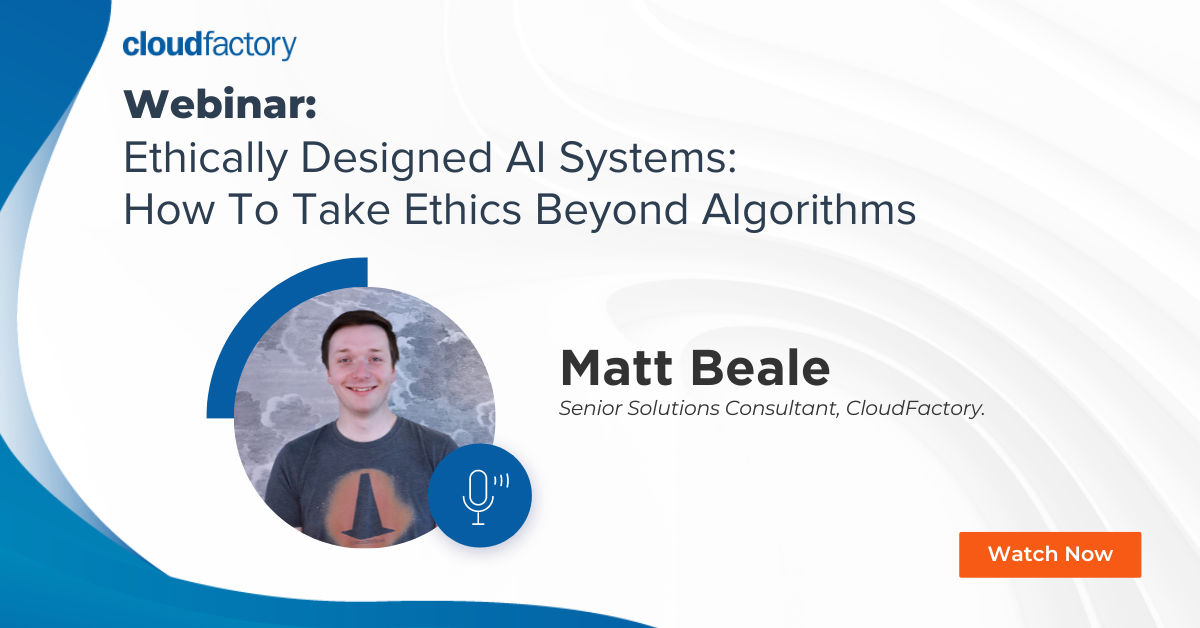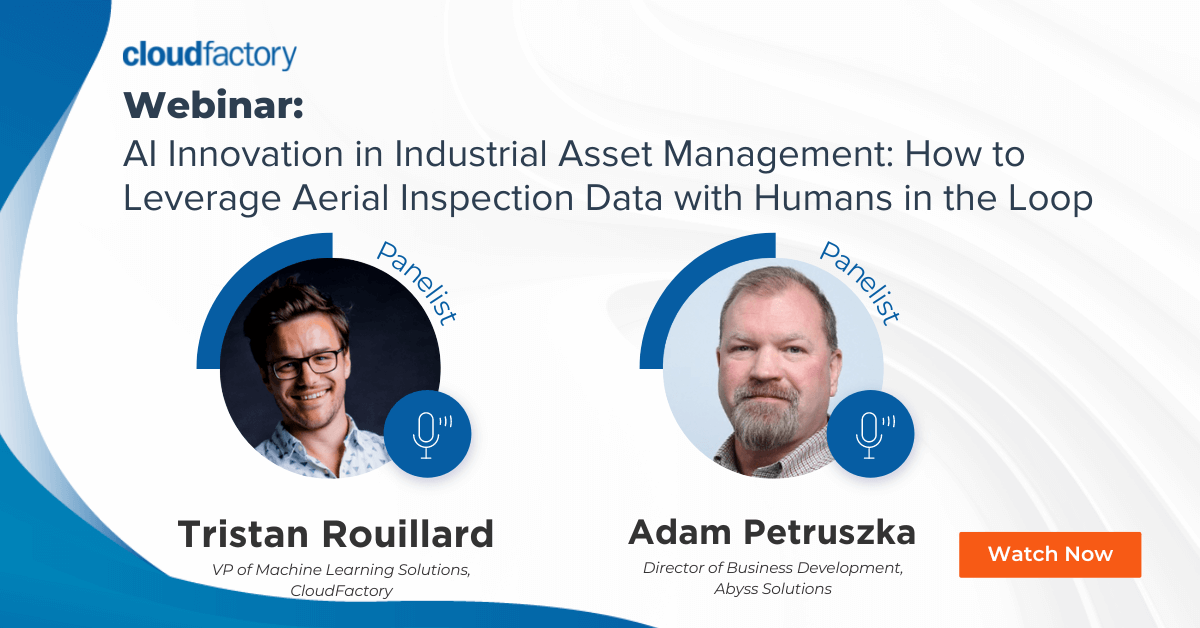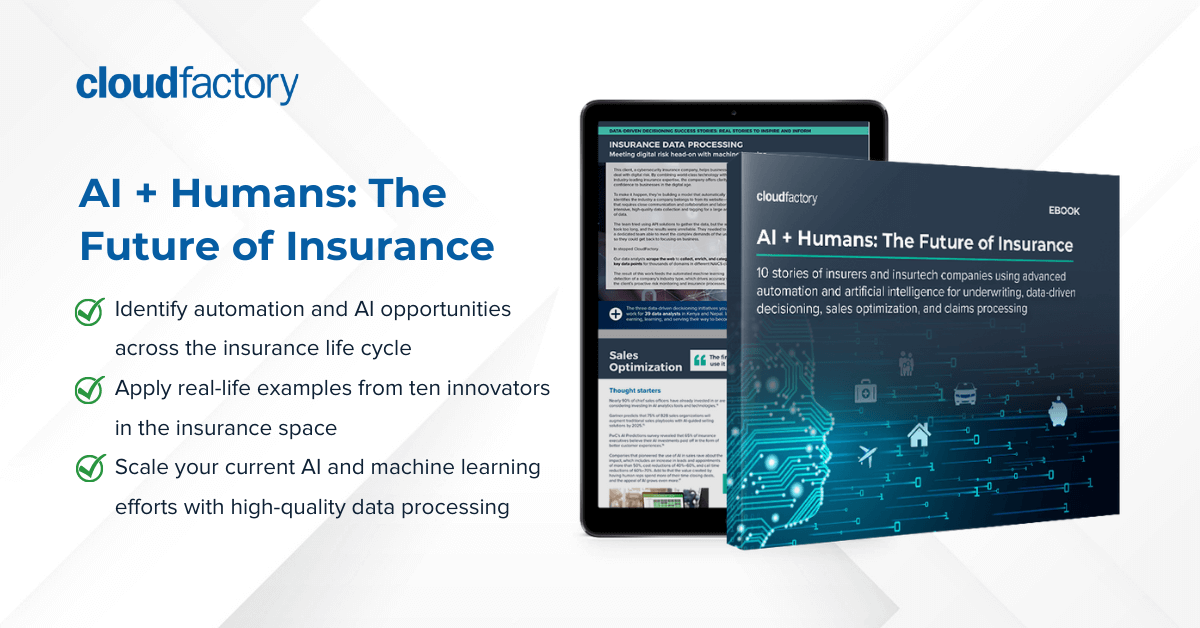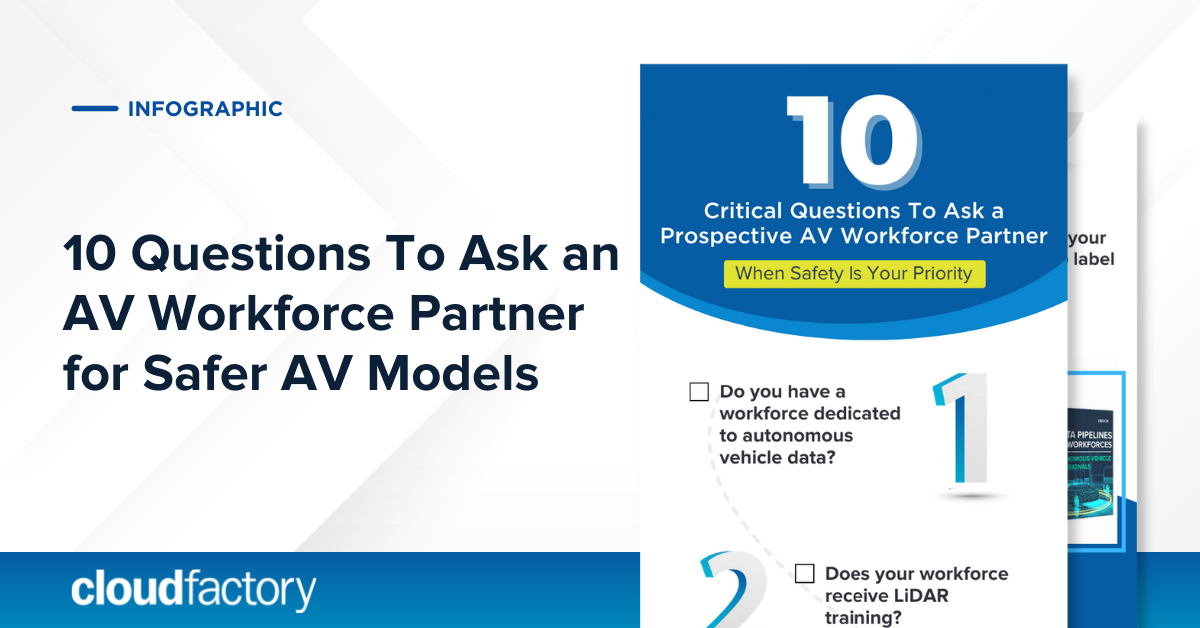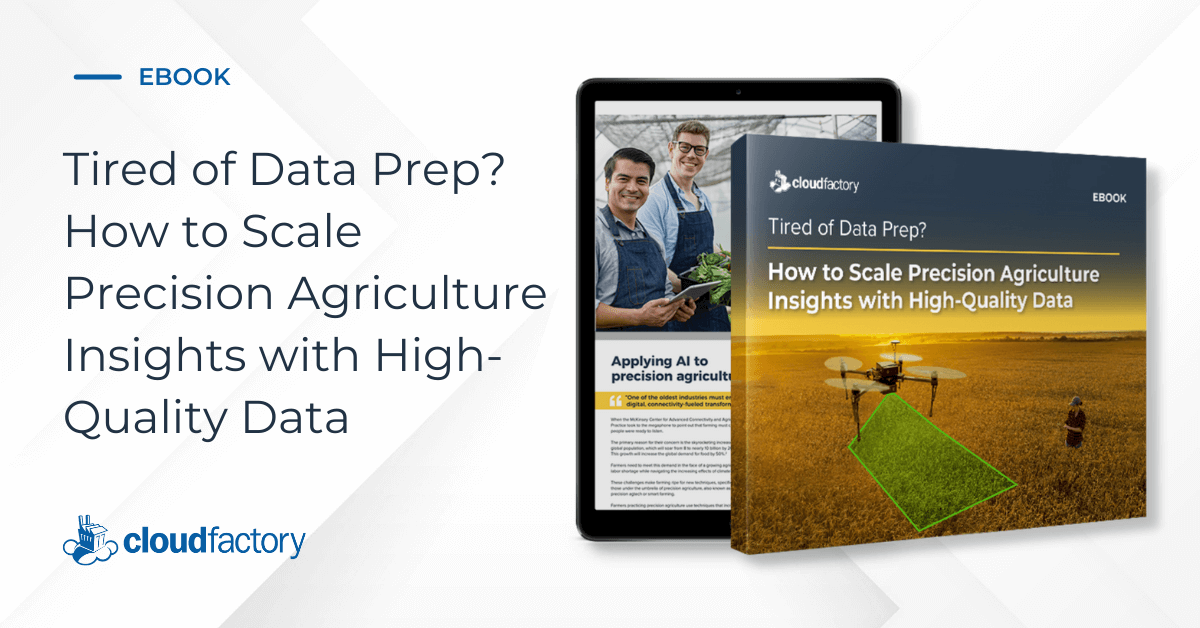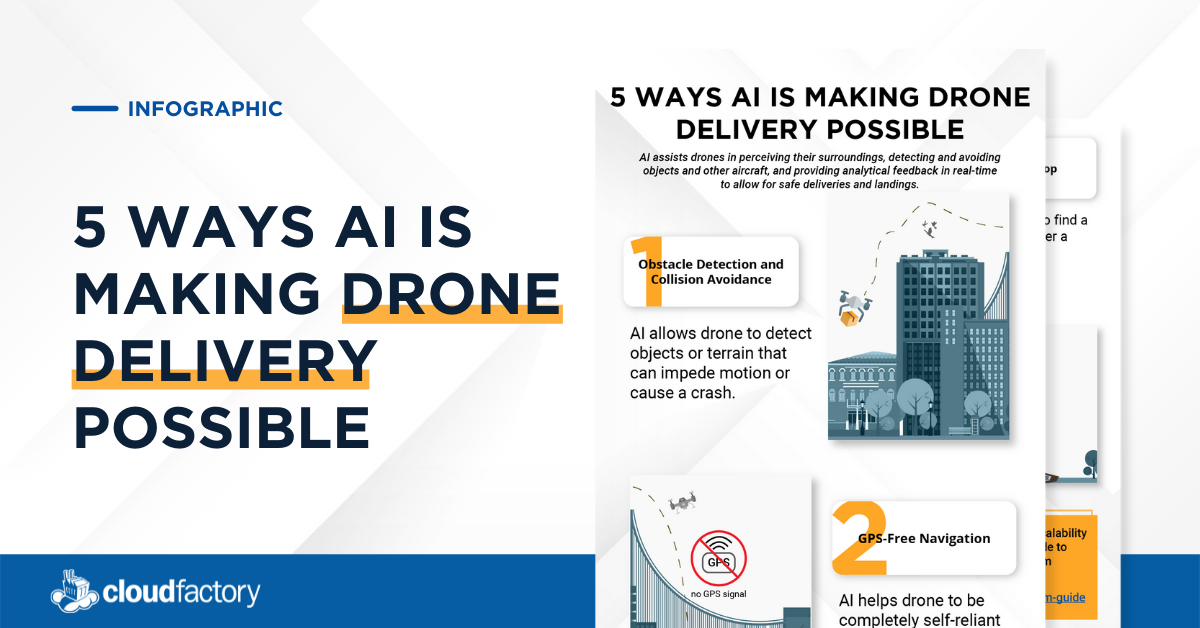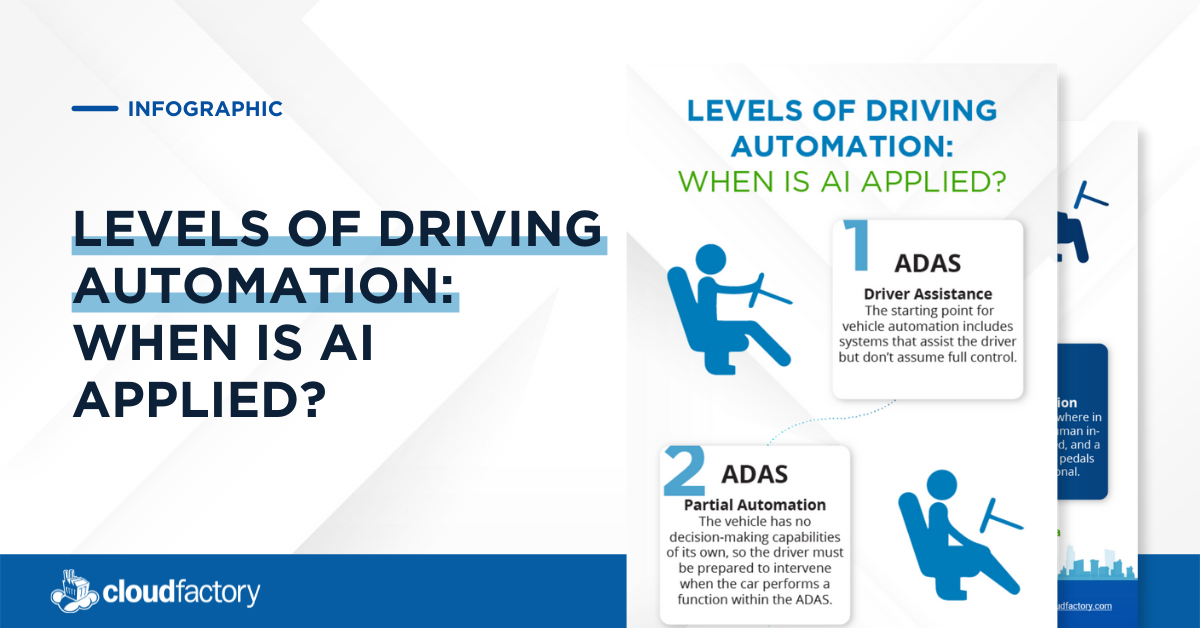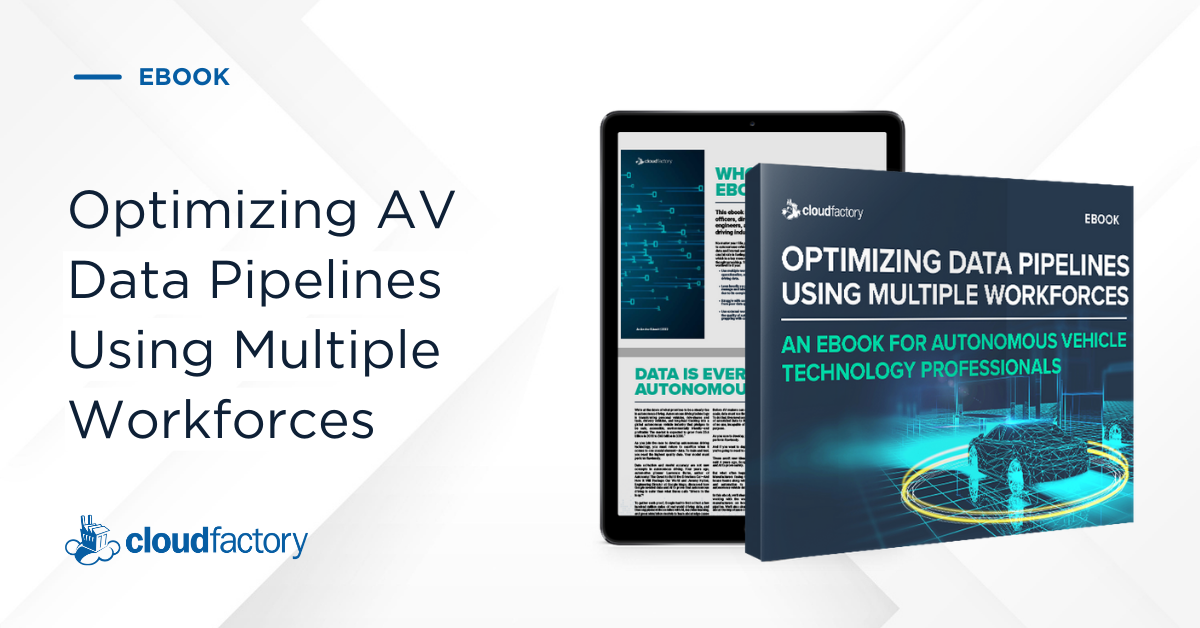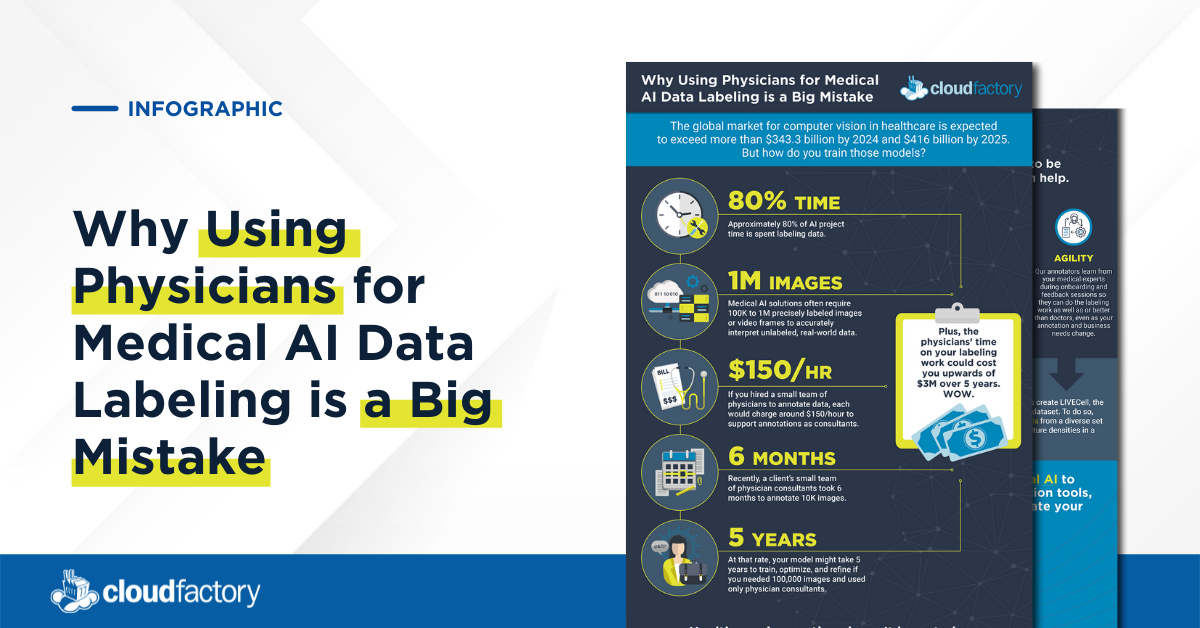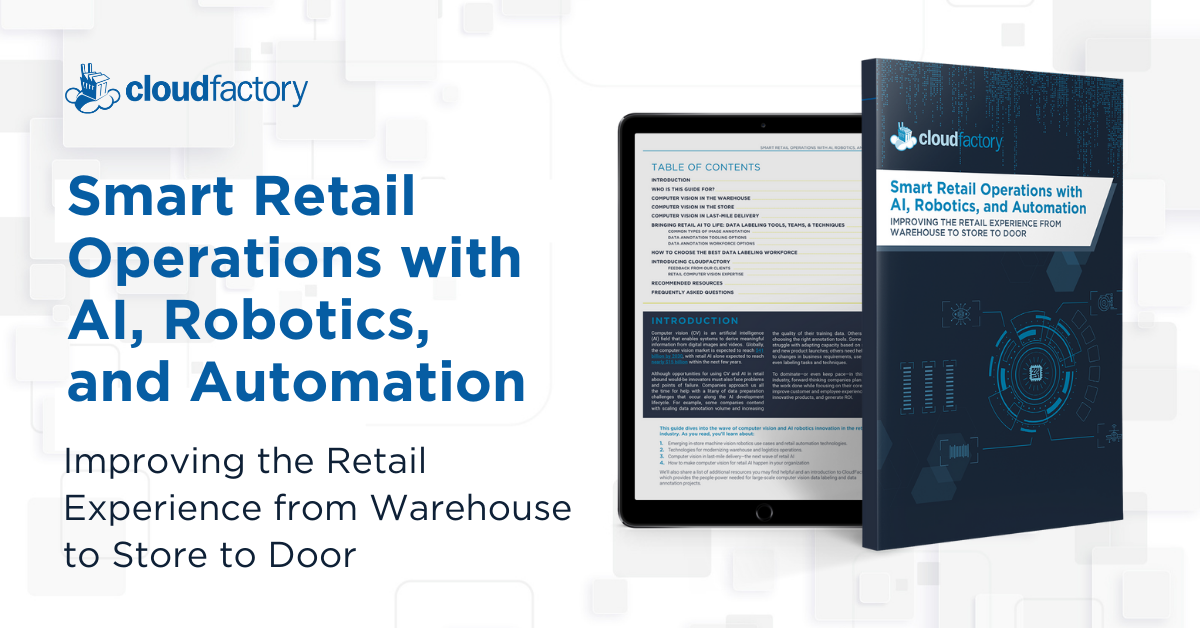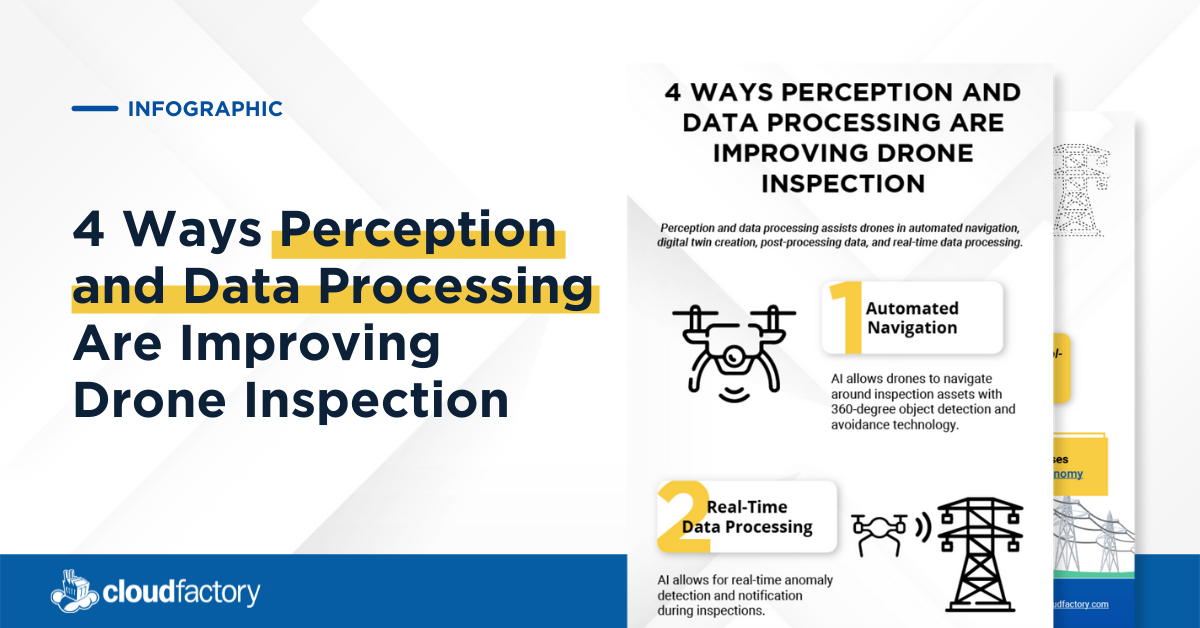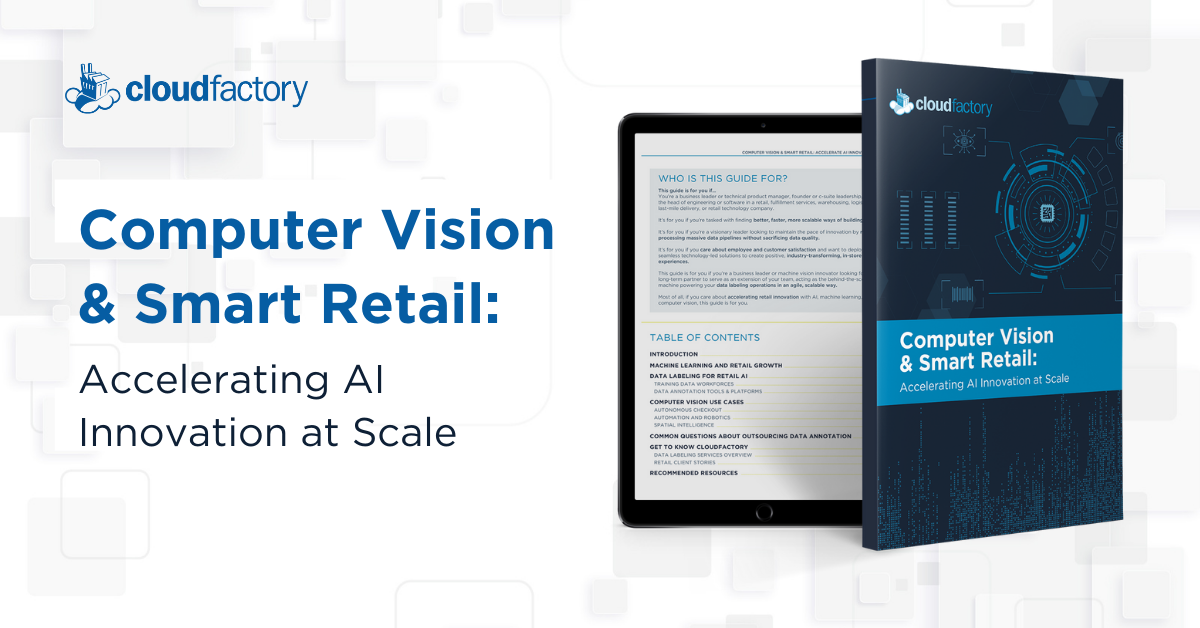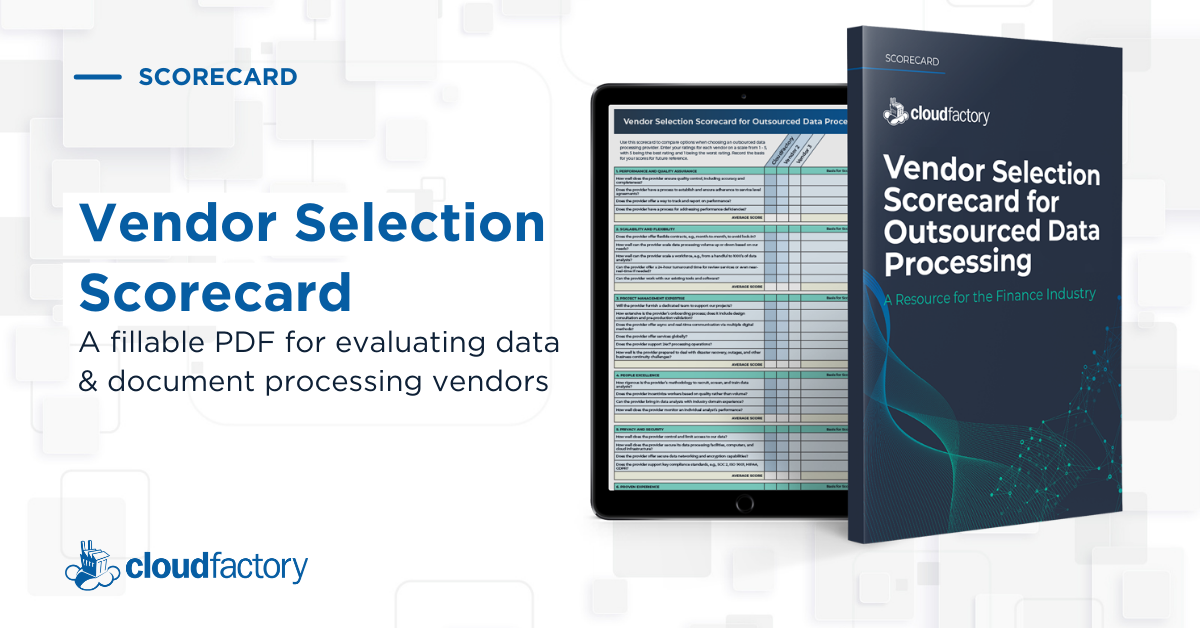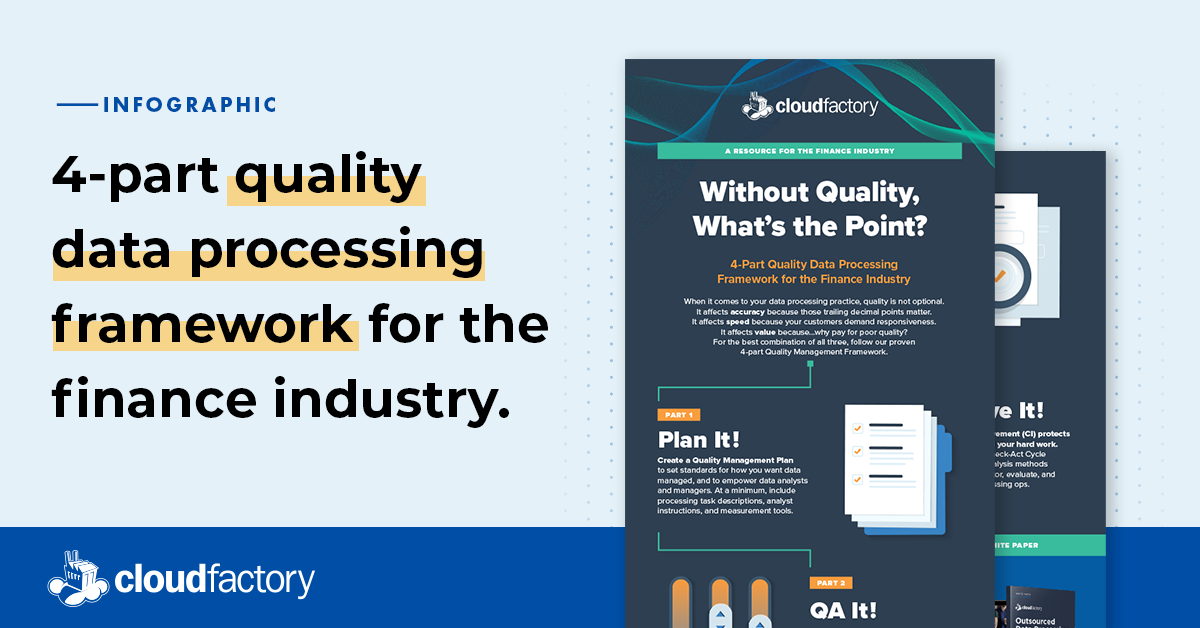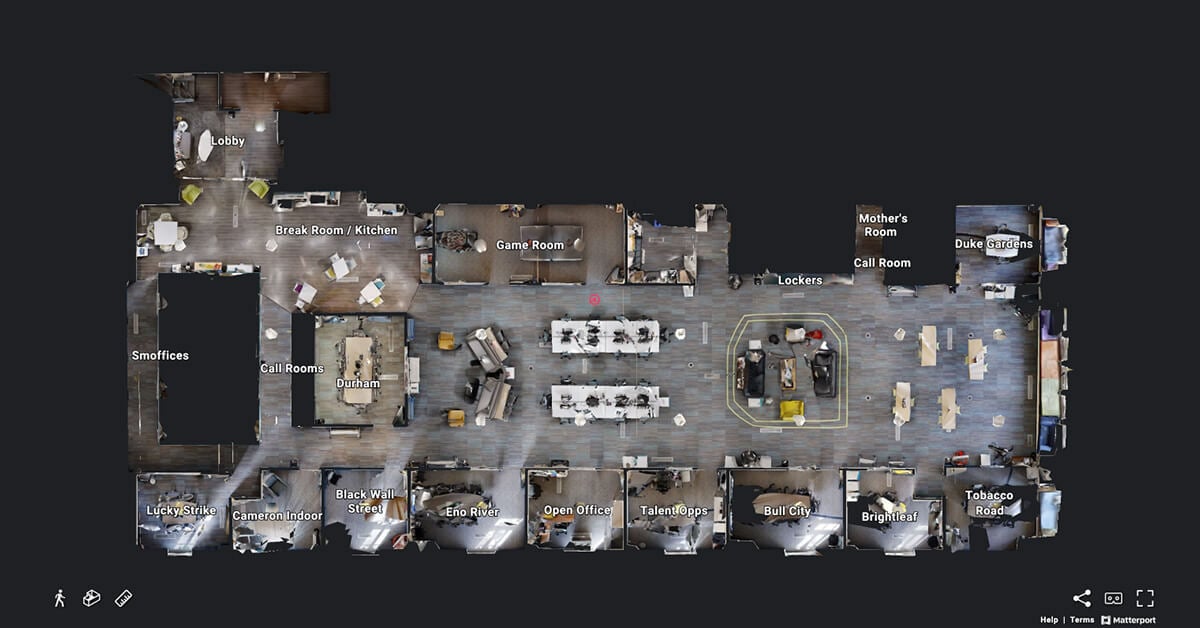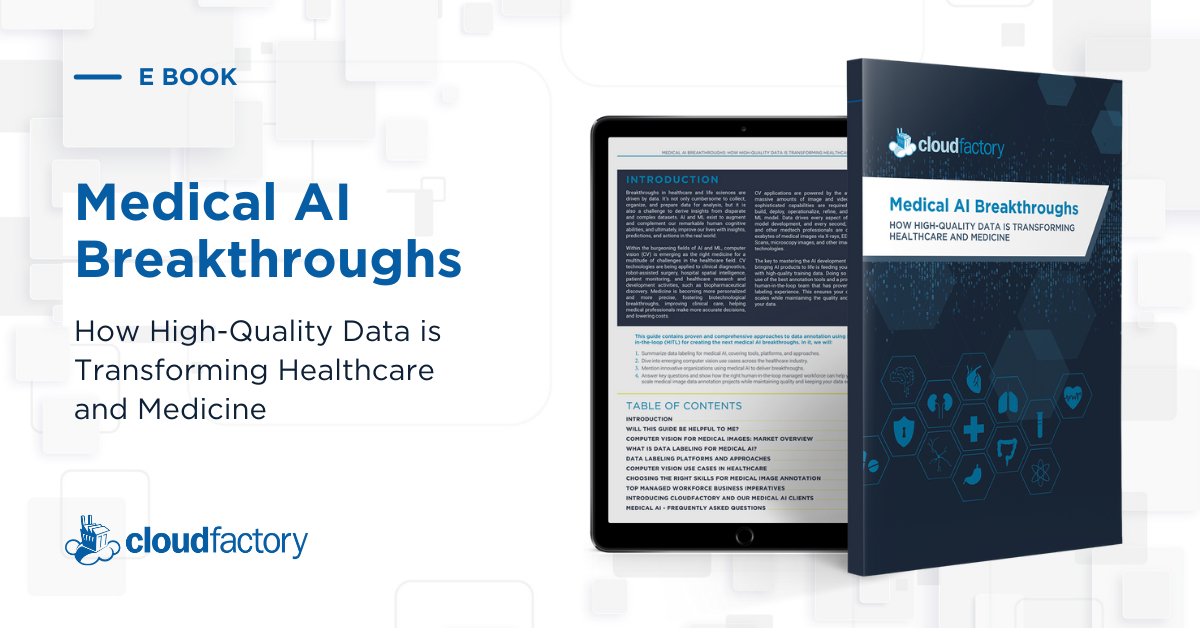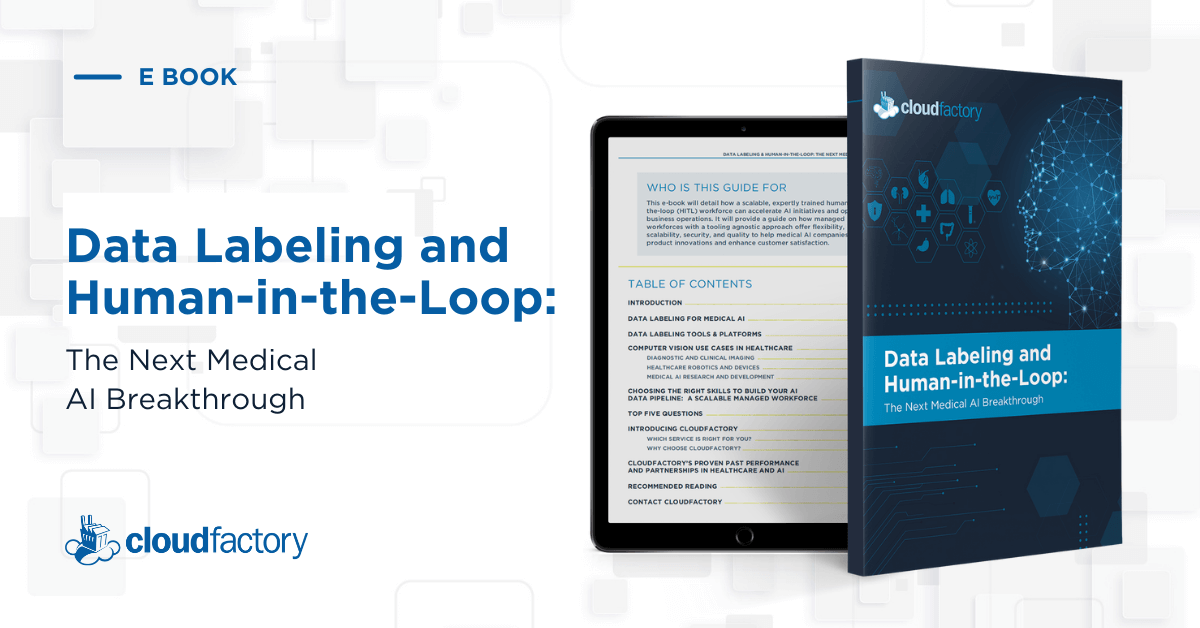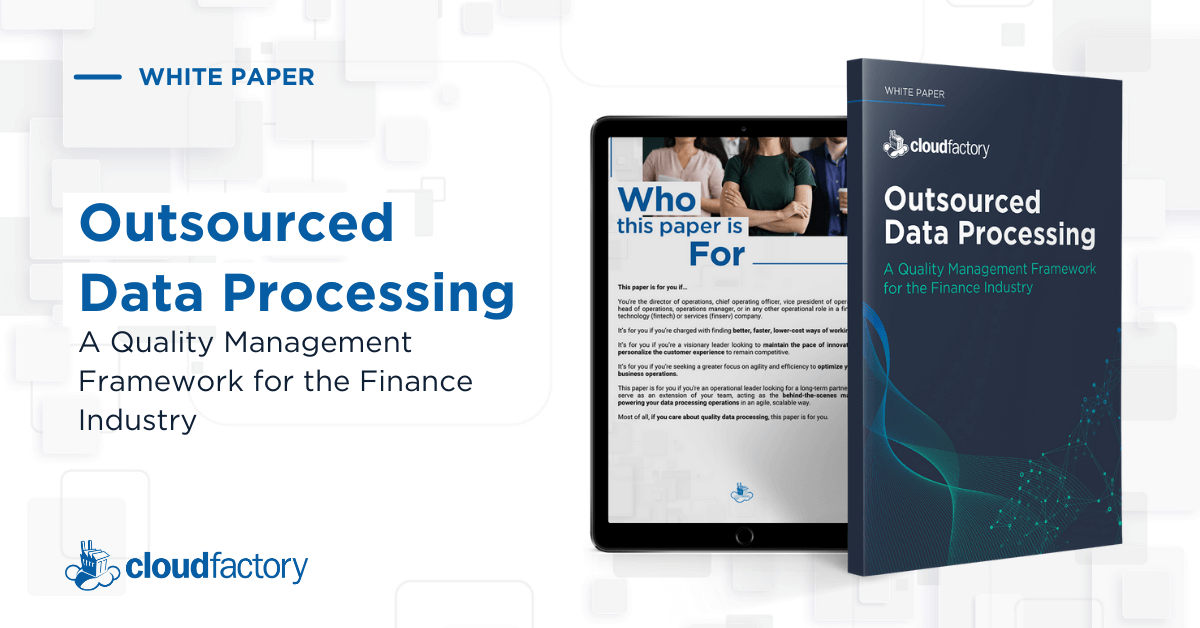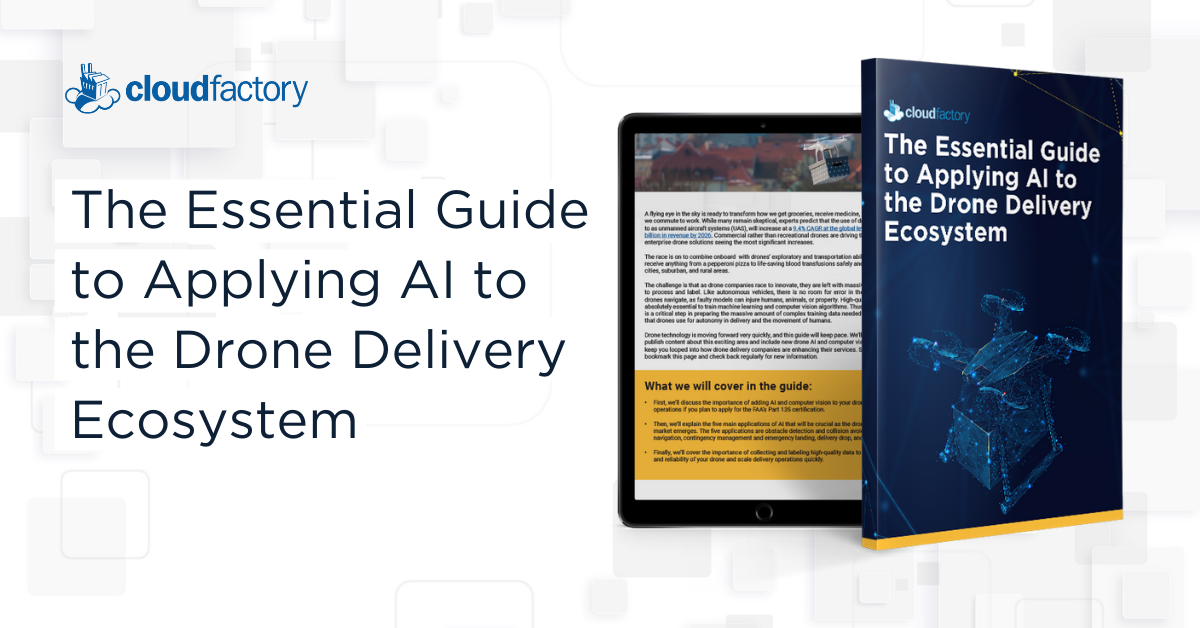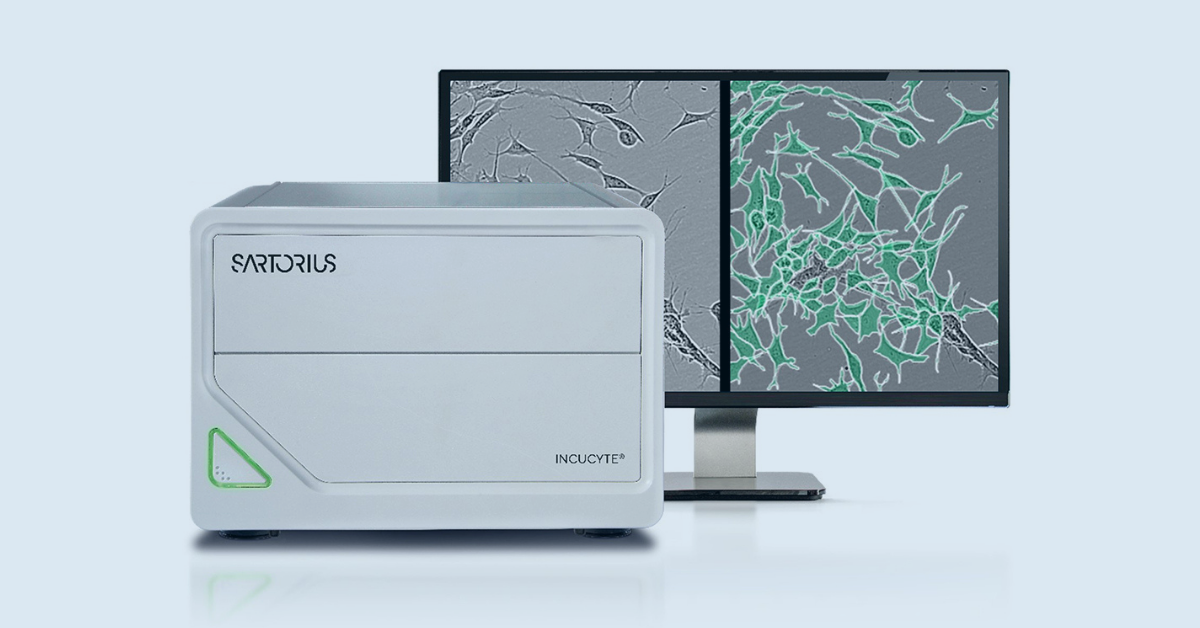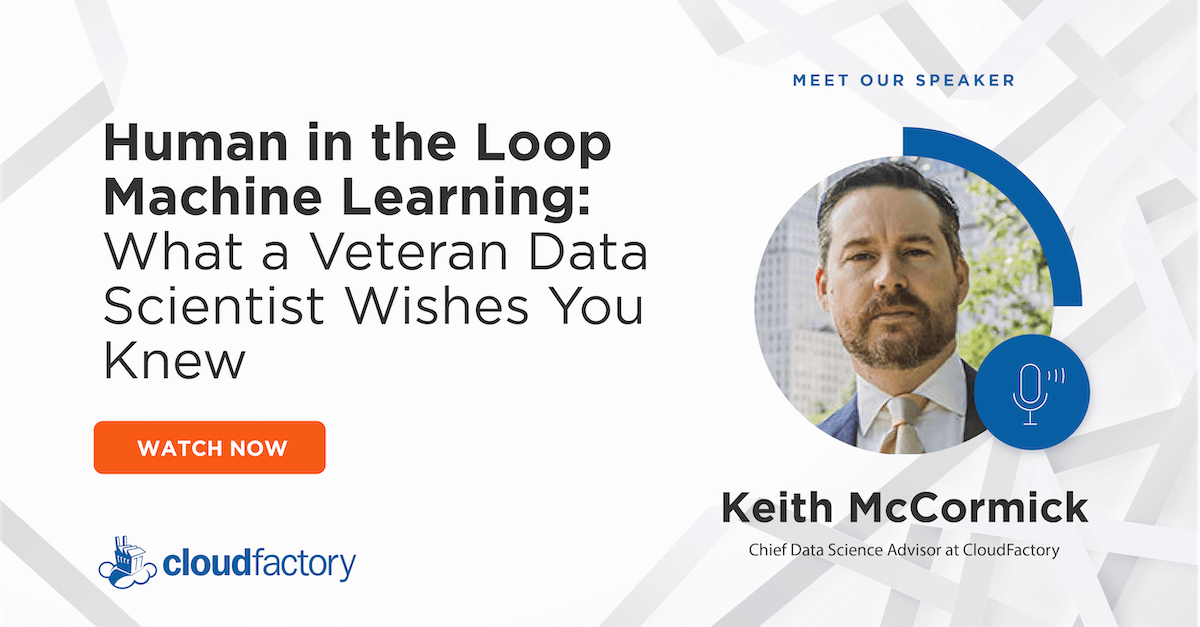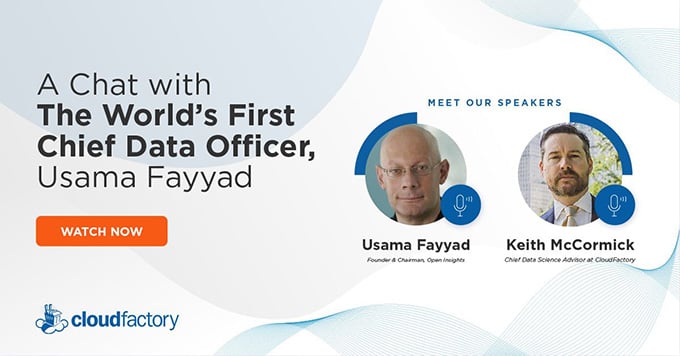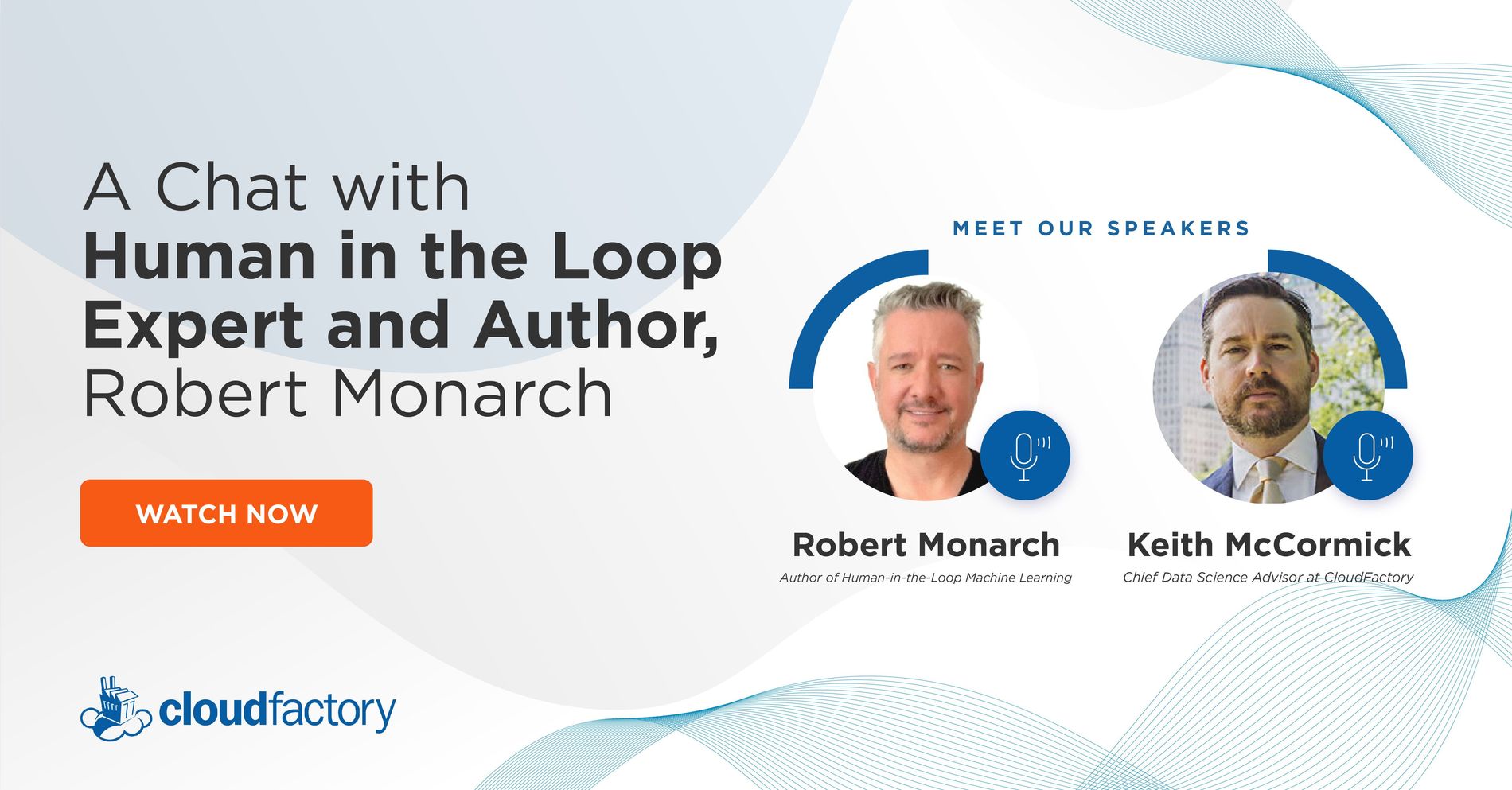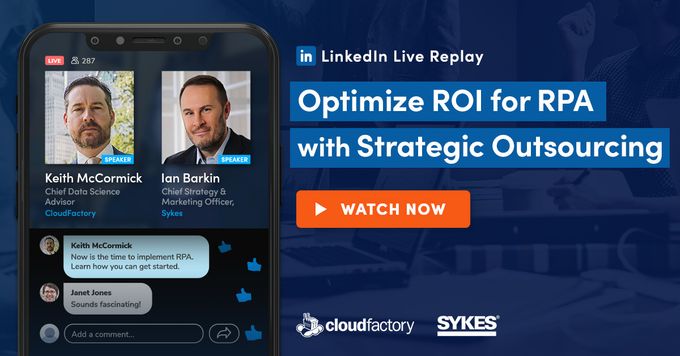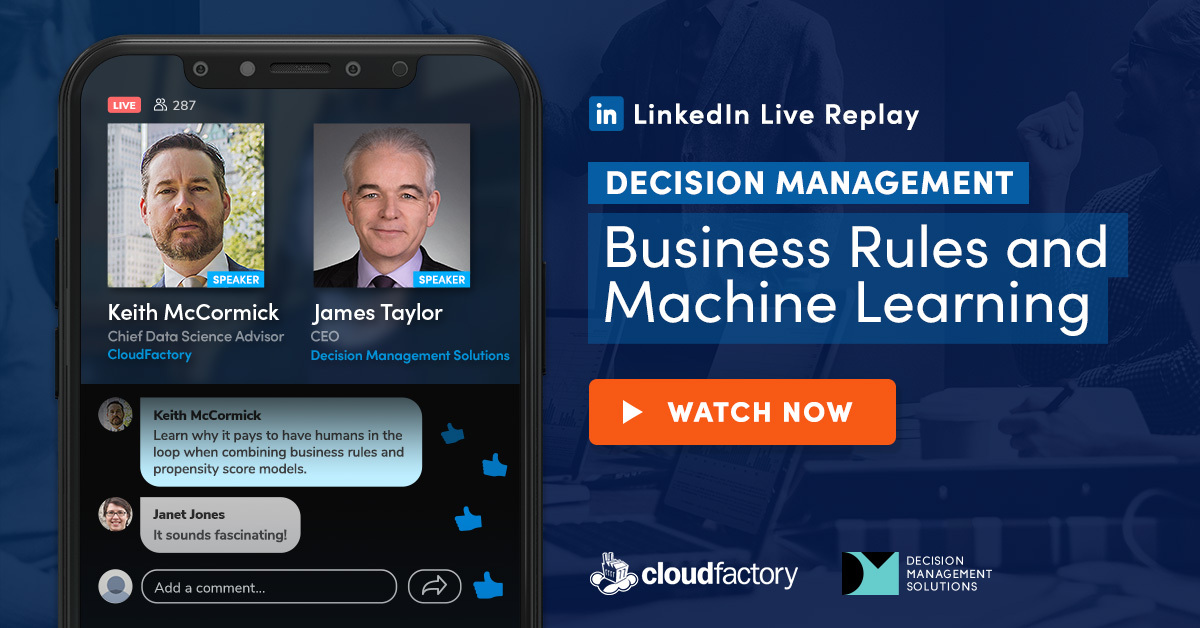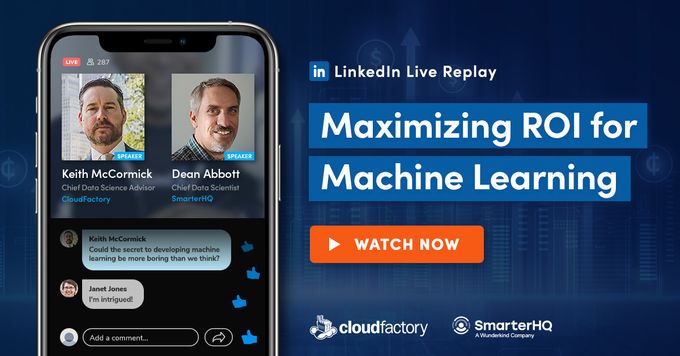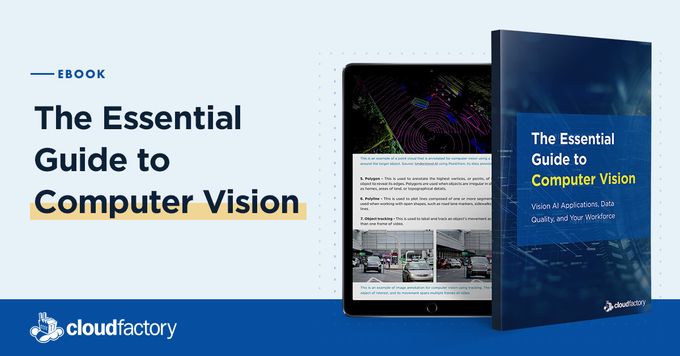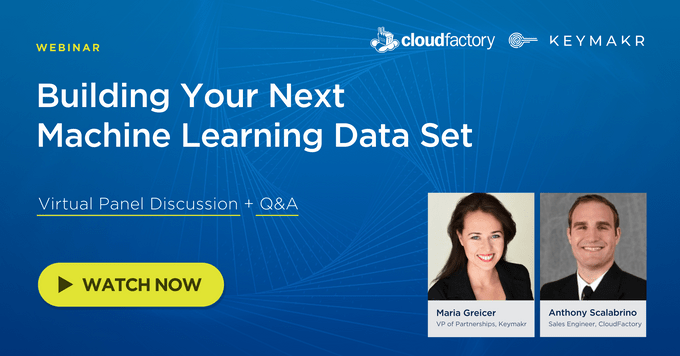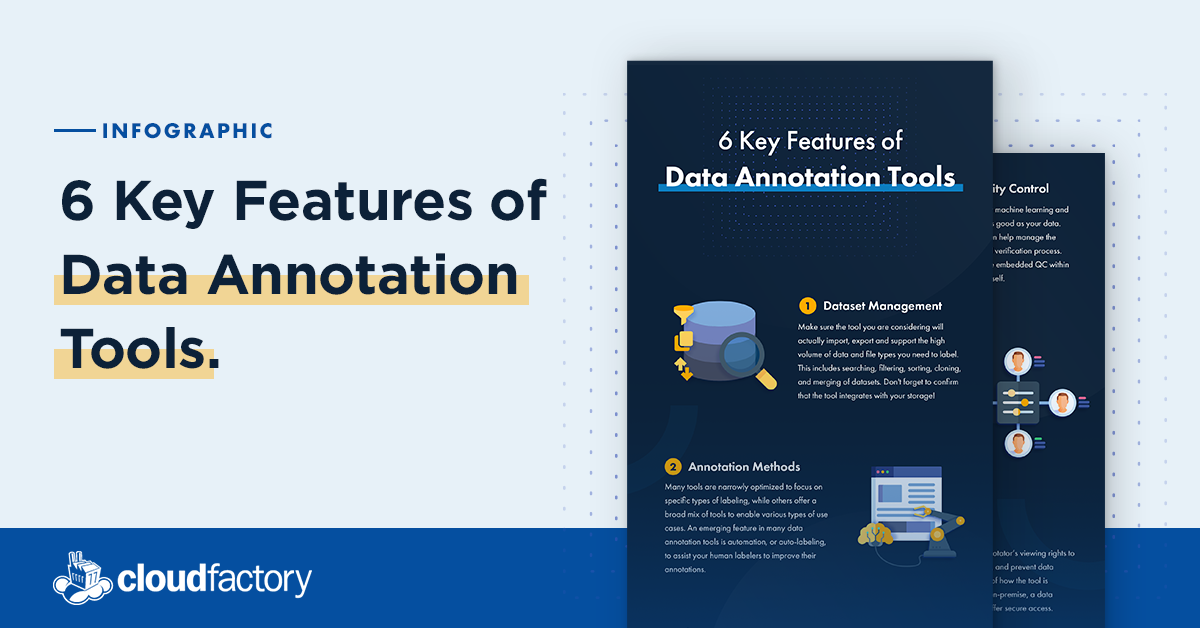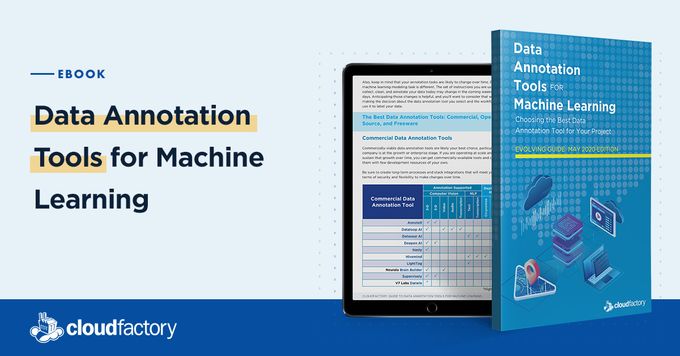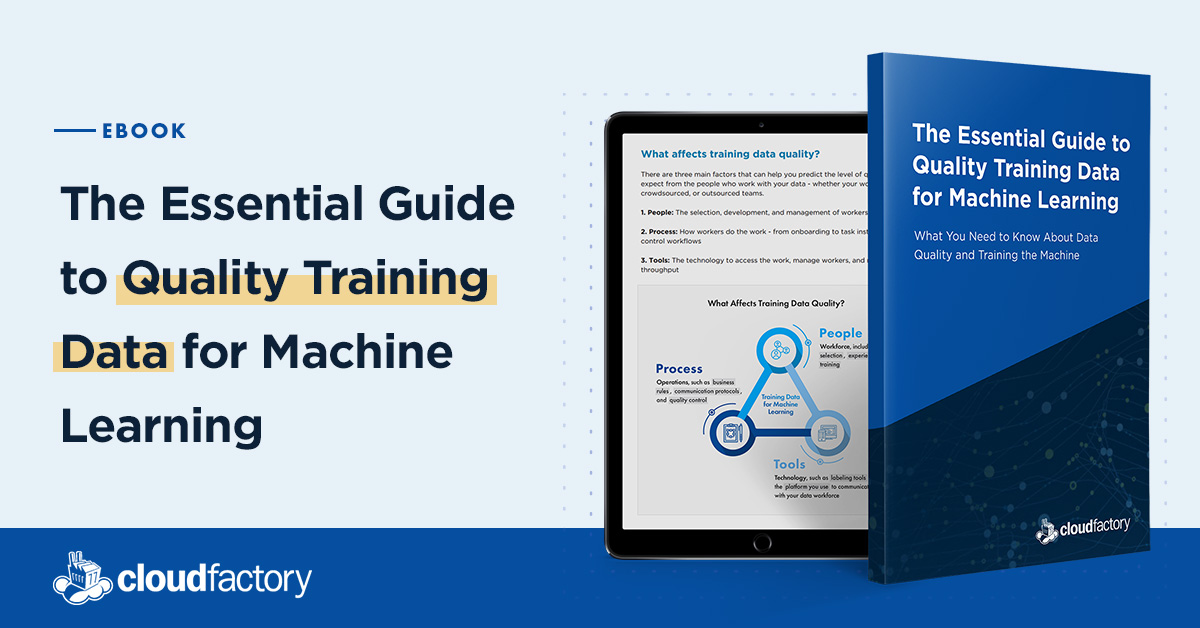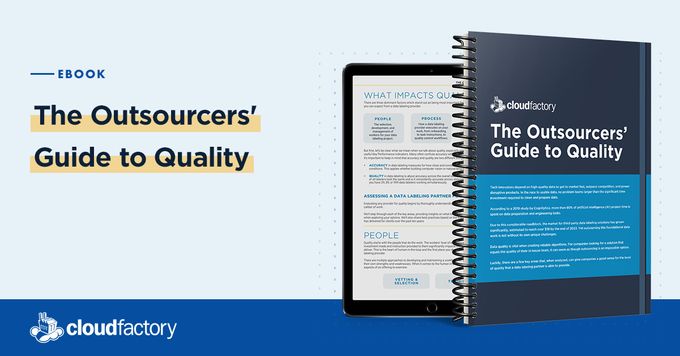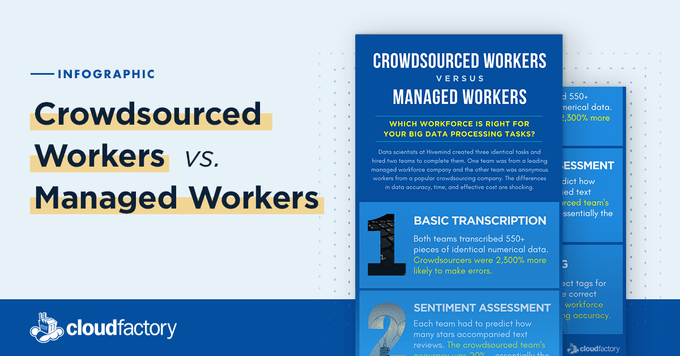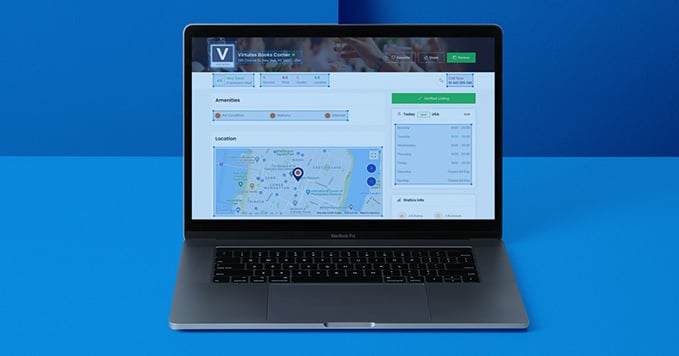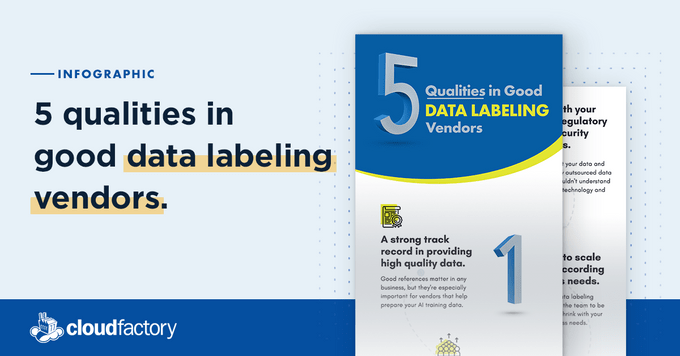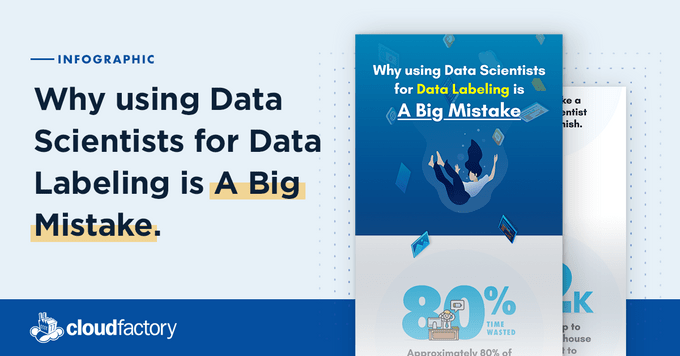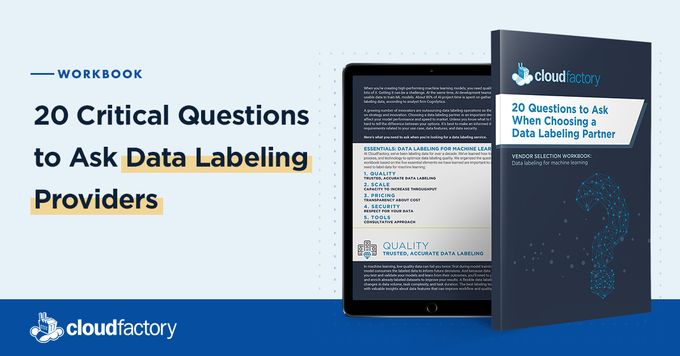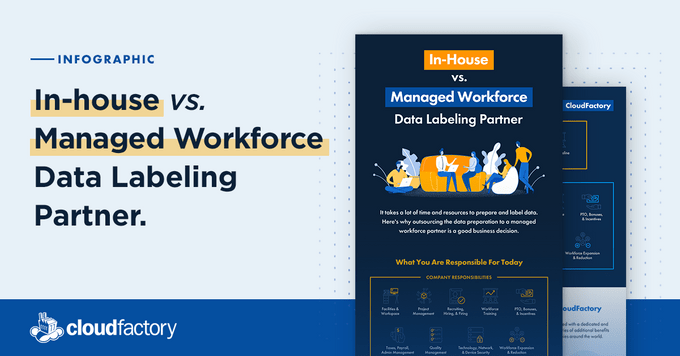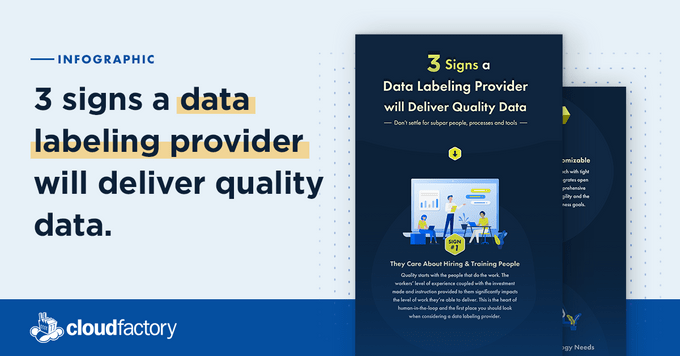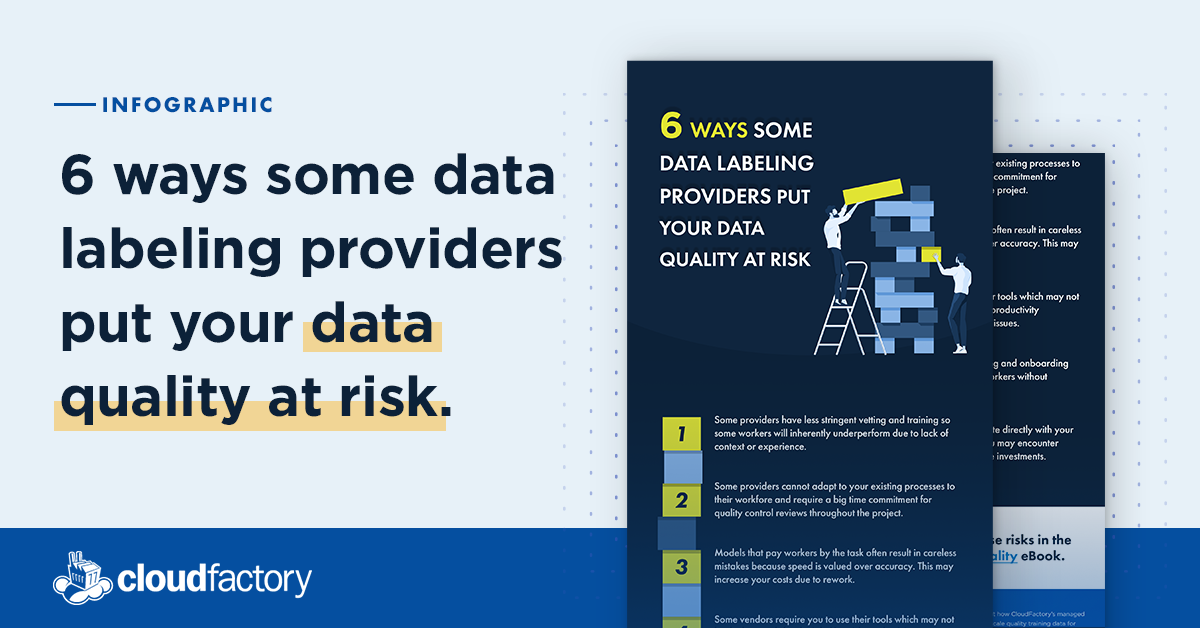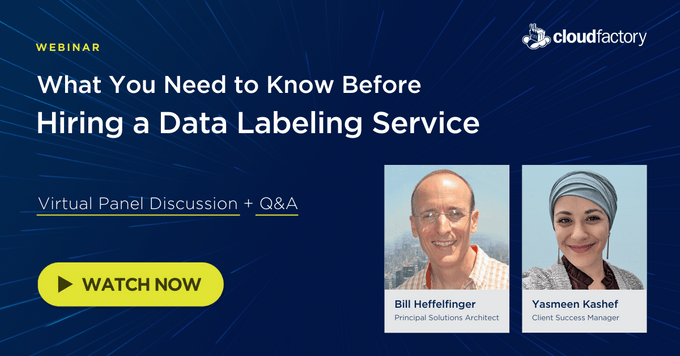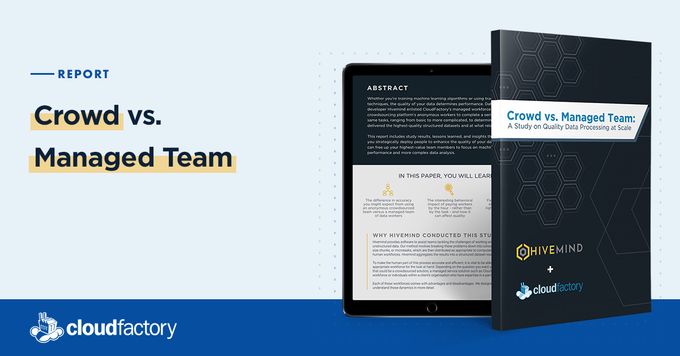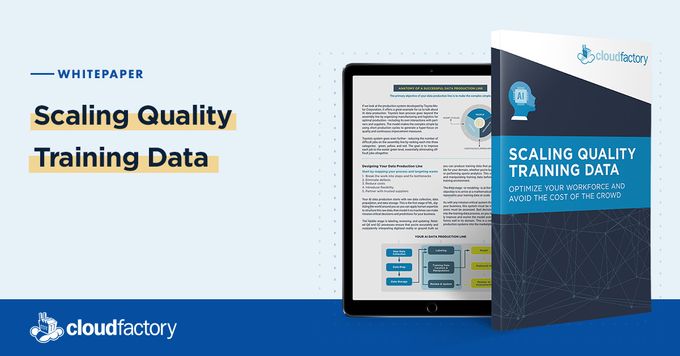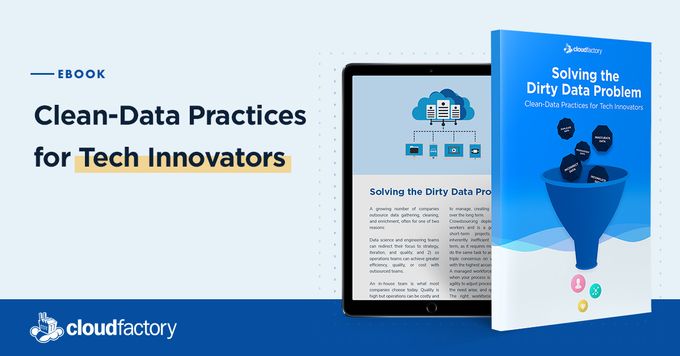All Resources
Explore insights, stories, and tools to power your AI journey.
From expert webinars and industry events to client success stories and infographics, discover how CloudFactory’s AI Consulting and AI Platform—featuring the Data, Training, Inference, and AI Engines—help you go from idea to production with confidence.
Your Guide to AI and Automation
Success Through Outsourcing
Our top tips on successfully managing vendor relationships and optimizing processes to maximize ROI—whether you are working on a new AI project or prioritizing automation.
All Resources
- All
- Research
- Webinars
- Client Stories
- Infographics
Infographic
How MV Transportation Achieved 50% Better Driver Retention with AI
MV Transportation's booklet delves into turning driver turnover into a competitive advantage using AI. In partnership with CloudFactory, they achieved 50% improvement in retention rates and reduced safety incidents through strategic AI implementation across their operator lifecycle.
White Paper
Healing Healthcare with AI: Learning from Nurses to Improve Patient Care and Financial Results
This white paper reveals how AI-powered insights led to a 137% EBITDA increase and a 44% reduction in nurse turnover. Learn how our AI solutions can help you achieve similar results.
Webinar
AI IRL March 2025: Successful GenAI Implementation
Catch the whole presentation recording from our AI_IRL London event on demand. Gain insights from thought leaders in natural language processing (NLP) and computer vision on achieving success with generative AI in smart documents and intelligent document processing.
Webinar
AI_IRL London
Data science, Gen AI, and AI solutions experts discuss real-world AI implementation challenges and solutions. Learn about building secure AI systems, leveraging large language models, and accelerating time to market with model inference.
Client Story
GameChanger: Model Monitoring & Oversight
Model monitoring of real-world apps by CloudFactory helps GameChanger attain higher customer satisfaction and fan engagement across youth sports.
Client Story
GameChanger: Accelerated Annotation
Data annotation from CloudFactory helps GameChanger reach new heights in data quality so it can continue to grow youth sports.
Client Story
Zeitview
CloudFactory data labeling empowers aerial inspectors to drive efficiency of solar panels and wind turbines to help power plants and properties avoid million-dollar losses.
Client Story
Charles River Analytics
Accelerated Annotation helps Charles River Analytics scale high-quality data annotation to fuel stronger maritime AI initiatives.
Client Story
A Global AgTech Company
Accelerated Annotation helps an AgTech leader deliver optimized crop yields through faster, more accurate ML models.
Ebook
Mastering data labeling for ML in 2024: A comprehensive guide
Outsourcing data labeling work can free up your teams to focus on accelerating AI/ML development. This guide will help you choose the right provider, process, and technology.
White Paper
Accelerating Data Labeling: A Comprehensive Review of Automated Techniques
Unlock top computer vision model building, annotation acceleration, and automated labeling approaches to enhance the efficiency and accuracy of your automation processes.
Ebook
Human in the Loop: Accelerating the AI Lifecycle
Humans in the loop can make or break AI success. Here’s how to apply people strategically to improve data quality and accelerate the AI lifecycle.
Webinar
Maximizing the Value of Your Autonomous Vehicle Data
Uncover how to get the most value from your AV data through accurate annotation in this on-demand webinar.
Client Story
Ocuvera
Ocuvera meets its human-centric mission faster with CloudFactory, resulting in an 89% reduction in unassisted bed exits.
Webinar
Improve Your Finance AI Strategy with Humans in the Loop
How a combination of AI, automation, and humans in the loop enables you to scale quickly while maintaining data quality.
Webinar
How to Avoid the Most Common Mistakes in Data Labeling
Scaling your data labeling operation effectively and efficiently: Lessons from our 10M+ hours of labeling experience.
Ebook
The Ultimate Guide to Natural Language Processing (NLP)
Interested in natural language processing? Empower yourself with knowledge about emerging use cases, development and annotation techniques, and managed data labeling workforces.
Client Story
Allvision
Spatial AI innovator Allvision meets its ambitious smart city GTM mission 8x faster thanks to our flexible partnership.
Webinar
Ethically Designed AI Systems
Taking ethics beyond algorithms: The real scope of conventional AI ethics and the critical role of humans in the loop.
Webinar
AI Innovation in Industrial Asset Management
How to leverage aerial inspection data with humans in the loop and use AI to cut asset inspection and management costs.
Ebook
AI + Humans: The Future of Insurance
Discover how AI and machine learning are advancing the insurance industry from sales to underwriting to claims processing. You’ll also get a first-hand glimpse into ten insurers and insurtech companies that are digitizing, modernizing, and innovating at scale.
Infographic
10 Questions To Ask an AV Workforce Partner for Safer AV Models
Selecting the right workforce partner is key to optimizing your data pipelines and executing safe, reliable AV models. Ask these 10 critical questions during your evaluations.
Client Story
LineVision
Expert annotations help an asset management platform open capacity on congested power lines and boost grid reliability.
Ebook
Tired of Data Prep? How to Scale Precision Agriculture Insights with High-Quality Data
Discover safer, faster, lower-cost, and innovative ways of working. We also share what we've learned from working with leading precision agtech companies, including scalable data prep and labeling.
Client Story
Compound Eye
CloudFactory image annotation helps Compound Eye release its disruptive, camera-based AV technology into the world.
Infographic
5 Ways AI is Making Drone Delivery Possible
There are five key areas where adding autonomy to drones will enable you to address regulatory hurdles, scale delivery operations, and conduct safe deliveries and landings.
Webinar
Agritecture & Computer Vision Raise the Bar for Sustainable Hops Farming
Learn how Agritecture, Asahi, and Microsoft help Czech hops farmers fight climate change using computer vision and technology.
Infographic
Levels of Driving Automation: When is AI Applied?
Automation doesn’t always mean AI when it comes to autonomous vehicles. Learn how the levels of driving automation are determined by the presence of automated driving systems (ADS) with AI technology or automated driving assistance systems (ADAS).
Ebook
Optimizing Data Pipelines Using Multiple Workforces: An ebook for Autonomous Vehicle Technology Professionals
Data quality and workforce strategy can make or break the success of your autonomous vehicle project. This guide will show you how to optimize your AV data pipeline using multiple workforces to launch safe, reliable autonomous driving models.
Infographic
Why Using Physicians for Medical AI Data Labeling is a Big Mistake
Busy physicians shouldn't do tedious data labeling work for medical AI projects. Here’s how much this mistake might cost you.
Ebook
Smart Retail Operations with AI, Robotics, and Automation
Learn how image and video annotation helps retailers produce high-quality robotics and autonomous solutions for in-store, warehouse, and delivery.
Infographic
4 Ways Perception and Data Processing Are Improving Drone Inspection
Perception and data processing enhances drone inspections by powering automated navigation, digital twin creation, post-processing data, and real-time data processing.
Client Story
Pathr.ai
Pathr.ai helps retailers understand shopper behavior to improve sales and operations.
Webinar
Drone Inspection - Building a Scalable and Efficient Data Pipeline for Today and Tomorrow
In this webinar, a panel of drone tech pioneers talks about how AI and computer vision, backed by high-quality data, is shaping the future of drone inspections.
Ebook
Computer Vision & Smart Retail: Accelerate AI Innovation at Scale
Retail AI is booming. Learn how computer vision and AI are revolutionizing in-store and fulfillment experiences for retail customers and employees.
Workbook
Vendor Selection Scorecard for Outsourced Data Processing
Given all the variables at play, choosing a managed workforce that meets your criteria can be a daunting task. Use this fillable Scorecard as you research potential partners.
Infographic
Without quality, what's the point? (A resource for the finance industry)
When it comes to your data processing practice, quality is NOT optional. It affects accuracy, speed, and value—in big ways. For the highest possible data quality, follow our proven 4-Part Quality Management Framework.
Client Story
Matterport
With CloudFactory image annotation, Matterport can focus on helping customers create interactive 3-D digital twins
Ebook
Medical AI Breakthroughs: How High-Quality Data is Transforming Healthcare and Medicine
Medical advancements depend on data and artificial intelligence. How do you prepare image and video data for diagnostics, robotics, research, and more? Find out in this guide.
Client Story
Tractor Zoom
With CloudFactory data enrichment, agtech company Tractor Zoom has grown from advertising $2B to $5B in assets annually.
Ebook
Data Labeling & Human-in-the-Loop: The Next Medical AI Breakthrough
Explore the challenges and opportunities in developing computer vision solutions for healthcare including annotation tools, data labeling workforces, and medical AI use cases.
White Paper
Outsourced Data Processing: A Quality Management Framework for the Finance Industry
This paper details a four-part quality management framework to ensure high-quality processing of financial data and documents, whether you outsource or do the work in-house.
Ebook
The Essential Guide to Applying AI to the Drone Delivery Ecosystem
Adding AI and computer vision backed by high-quality data will improve drone safety and reliability. This guide will show you how applying AI to drone delivery operations will address regulatory hurdles and help you scale quickly.
Webinar
Maximizing Data Labeling Operations in High-Stakes Industries
V7 Labs’ Alberto Rizzoli and CloudFactory’s Keith McCormick discuss overcoming data annotation challenges like scaling teams, labeling complex data, and handling edge cases.
Client Story
Sartorius
Sartorius came to CloudFactory to speed the development of large training datasets for its machine learning models.
Webinar
Human in the Loop Machine Learning: What a Veteran Data Scientist Wishes You Knew
In this webinar, we explore the definition, benefits, and use cases for human in the loop (HITL) machine learning from the perspective of seasoned data science practitioners.
Client Story
Sylvera
Sylvera came to CloudFactory for a customized annotation solution to make sure carbon-offsetting projects live up to their claims.
Webinar
A Chat with Smart Cities Expert and Author, Jonathan Reichental
Keith McCormick and Jonathan Reichental discuss smart cities, the data they collect, and the impact of AI technology like autonomous vehicles.
Webinar
A Chat with the World’s First Chief Data Officer, Usama Fayyad
Keith McCormick and Usama Fayyad discuss autonomous vehicles, deep learning, NLP, and the future of data science in this on-demand webinar.
Webinar
A Chat with Human in the Loop Expert and Author, Robert Monarch
Interested in humans in the loop machine learning? Watch a replay of Keith McCormick and Robert Monarch’s discussion about HITL, workforce options, ethics, and active learning.
Client Story
Nearmap | Roof Geometry
A geospatial mapping company turned to CloudFactory for help to scale a new roof geometry business.
Client Story
AMP Robotics
Recycling tech company turned to CloudFactory when its growth outpaced internal capacity to annotate quality data.
Webinar
Optimize ROI for RPA with Strategic Outsourcing
Now is the time to implement robotic process automation (RPA). We discuss maximizing ROI, workforce decisions, and exception processing with Ian Barkin of SYKES.
Client Story
Nearmap | AI
Geospatial mapping company turned to CloudFactory to take over its data labeling function and scale operations.
Client Story
Zyte
Web scraping technology company turned to CloudFactory to speed up development of a new scraping tool.
Webinar
Decision Management: Business Rules and Machine Learning
How should you combine your predictive models with existing business rules? Watch this discussion with James Taylor, CEO of Decision Management Solutions to learn how to optimize ML outcomes.
Webinar
Maximizing ROI for Machine Learning
How can humans in the loop help optimize machine learning outcomes? Hear from ML experts CloudFactory's Keith McCormick and Dean Abbott, Chief Data Scientist at SmarterHQ.
Client Story
FestiVote
FestiVote turned to CloudFactory to get the data they needed to launch their groundbreaking app.
Client Story
Geckomatics
Geckomatics turned to CloudFactory to help scale their cost-effective solution to more customers around the world.
Client Story
Scholars App
Scholars App turned to CloudFactory to build and vet their scholarship database and expand their users.
Webinar
The Future of Human-powered Data Annotation
Data annotation is seeing advances such as using AI and automation that seemingly promise to eliminate the need for human-powered labeling. This panel explores the future of humans-in-the-loop data annotation and what role your labeling workforce will play in the years to come.
Client Story
True Lark
True Lark turned to CloudFactory to help them scale data tagging for development of a robust customer communication solution.
Ebook
The Essential Guide to Computer Vision
Computer vision models require a massive amount of data to learn and stay current. It takes upwards of 800 hours to annotate one hour of video training data and you certainly don’t want to choose the wrong techniques or workforce to annotate that data. This guide will help you make good choices about data annotation for computer vision.
Webinar
Building Your Next Machine Learning Data Set
Gathering an initial data set for your machine learning project is the first hurdle on the path to a successful ML algorithm. CloudFactory and Keymakr discuss the attributes of an ideal data set, the pros and cons of using a pre-created data set, and best practices for building your own.
Infographic
6 Key Features of Data Annotation Tools
Some data annotation tools won't be a good fit for your AI and machine learning project. Keep these six important features in mind as you evaluate tool providers.
Client Story
Farming for the Future
Learn how CloudFactory helped Hummingbird Technologies develop crop analytics for farmers around the world.
Client Story
Luminar
CloudFactory helped Luminar launch a product that dramatically increases autonomous vehicle perception.
Ebook
Image Annotation for Computer Vision
Machine learning is often fueled by image data. In this guide, learn the basics about image annotation, common techniques, and key workforce considerations.
Ebook
Data Annotation Tools for Machine Learning
Selecting the right tool to annotate your data can save you time, money, and frustration. This guide will help you choose the best data annotation tools for your machine learning project.
Webinar
5 QA Methods to Win the Race to Quality Data
The end goal for every data labeling project is quality data - but how do you get there? There are several QA workflow types but each has pros and cons when it comes to the quality and speed of data outputs. In this panel discussion, we will explore 5 quality assurance workflows for data labeling including tooling, staffing, and how each workflow affects throughput and data quality.
Ebook
The Essential Guide to Quality Training Data
Are you training machine learning algorithms or planning to scale your team's training data operations? Here are some tips to ensure your people, processes, and tools produce quality training data.
Client Story
Sensor-as-a-Service Company
Sensor-as-a-service start-up finally finds an annotation solution that can help them expand.
Client Story
Heretik
Heretik wanted to make legal contract review less tedious so they created an AI-fueled solution. Learn how CloudFactory helped bring their software to life.
Ebook
The Outsourcers' Guide to Quality
Data quality is vital when creating reliable algorithms. For companies looking for a solution that equals the quality of their in-house team, it can seem as though outsourcing is an impossible option. Have no fear. This eBook will help you predict the level of quality you can expect from a data labeling provider.
Client Story
Disrupting the Legal Space with AI
Learn how CloudFactory helped Heretik train their AI models and disrupt the legal industry by streamlining the contract review process.
Infographic
Crowdsourced Workers vs. Managed Workers
Data scientists at Hivemind created 3 identical tasks and hired two teams to complete them. How did crowdsourced workers and a managed workforce differ in terms of accuracy, speed, and effective cost?
Client Story
Bizly
Bizly found the perfect workforce to help it expand its event planning platform to over 18,000 venues.
Infographic
5 Qualities in Good Data Labeling Vendors
Not all outsourced data labeling partners are a good fit for every machine learning project. Here are 5 things you need to consider before, during, and after vendor evaluations.
Infographic
Why Using Data Scientists for Data Labeling is a Big Mistake
Your in-house data scientists shouldn't be doing tedious data labeling work for machine learning projects. They should be focusing on more important innovation. How much might it cost for a data scientist to annotate a one-hour video?
Workbook
20 Critical Questions to Ask Data Labeling Providers
When you’re creating high-performing machine learning models, you need quality, labeled data...and lots of it. Getting it can be a challenge. A growing number of innovators are outsourcing data labeling operations so their teams can focus on strategy and innovation. Choosing a data labeling partner is an important decision that can affect your model performance and speed to market. Here’s what you need to ask when you’re looking for a data labeling service.
Infographic
In-House vs. Managed Workforce Data Labeling Partner
It takes a lot of time and resources to prepare and label data. Learn why outsourcing the data preparation to a managed workforce partner is a good business decision and how in-house responsibilities will shift when you outsource the work.
Infographic
3 Signs a Data Labeling Provider will Deliver Quality Data
The people, processes, and tools used by outsourced data labeling partners make a big difference in final data quality. Here are 3 signs that you'll receive quality work from your data partners.
Infographic
6 Ways Some Data Labeling Providers Put Your Data Quality at Risk
The level of data quality you'll receive from data labeling providers depends on several workforce, QA, and tooling factors. Here are 6 ways *some* data labeling providers put your data quality at risk.
Client Story
Medical AI Company
Medical AI company stays ahead of the curve by labeling 24,000 images in 6 months.
Client Story
Insurance Company
An insurance company expanded their business with the help of a dedicated cloud team that handles upfront data processing needs.
Webinar
Choosing the Right Data Labeling Partner
It takes a mountain of data to train, test, and build machine learning algorithms and AI projects. You may be considering hiring a data labeling service to take the burden off your in-house data scientists and machine learning engineers. But what does that entail? Watch the webinar to learn what you need to know before hiring a data labeling service.
Client Story
Financial Services Company
Financial services company leveraged a managed workforce to improve turnaround time from days to just minutes with 99% accuracy.
Report
Crowd vs. Managed Team
Data scientists at Hivemind tested CloudFactory’s managed workforce and a leading crowdsourcing platform’s anonymous workers to complete a series of the same tasks, ranging from basic to more complicated, to determine which team delivered the highest-quality structured datasets and at what relative cost.
Client Story
Partnering on Quality Training Data and Social Impact
Azavea interviewed a handful of leading data labeling firms, and studiously compared their pricing, approach, and cultural values. Learn why CloudFactory stood out.
White Paper
Scaling Quality Training Data
If you need people to process some portion of the big data that feeds your artificial intelligence, you need a reliable workforce. You’re not alone: more businesses are using in-house staff, contractors, and crowdsourcing to get this kind of work done, and industry analysts expect that trend to increase significantly over the next two years.
Client Story
Ibotta
Ibotta finds the people and technology to scale a data-verification process during the busiest retail season of the year.
Ebook
Solving the Dirty Data Problem
Data is today’s gold, representing huge potential value for businesses. By analyzing data, you can discover patterns that can help you make smarter decisions, improve products, and disrupt entire industries. Download our guide to solve the dirty data problem.
Ready to get started?
In high-stakes environments, AI can’t just be good—it must be right. Let’s build AI you can trust.
.png?width=1563&height=1563&name=Untitled%20design%20(38).png)




.png?width=1563&height=1563&name=Untitled%20design%20(30).png)



.png?width=1563&height=1563&name=Untitled%20design%20(33).png)


.png?width=1563&height=1563&name=Untitled%20design%20(34).png)





